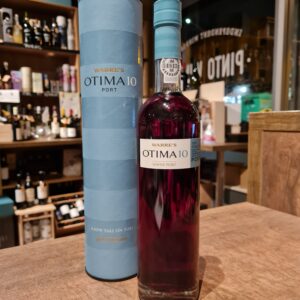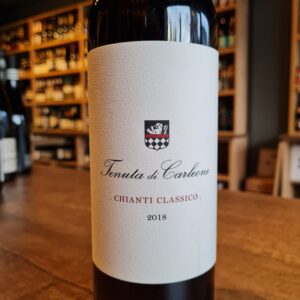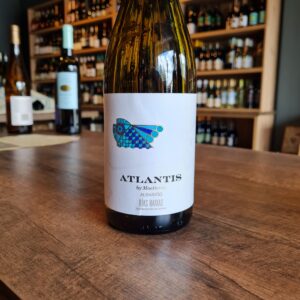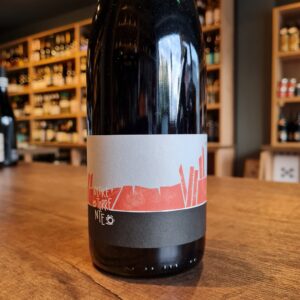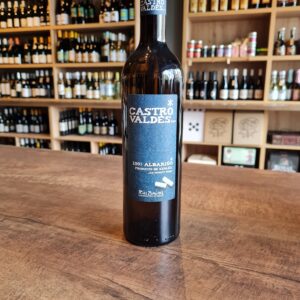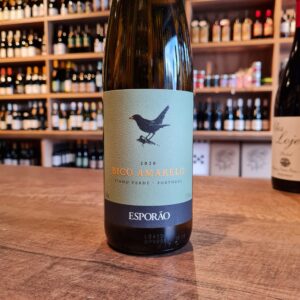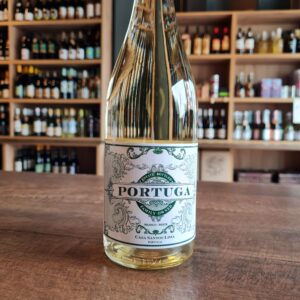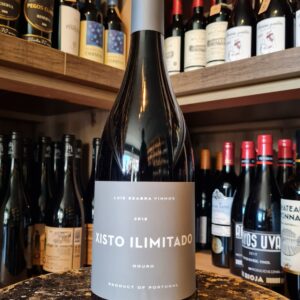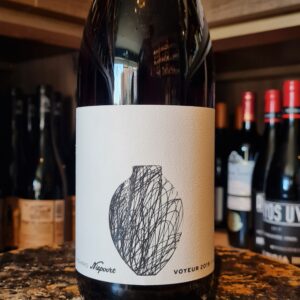-
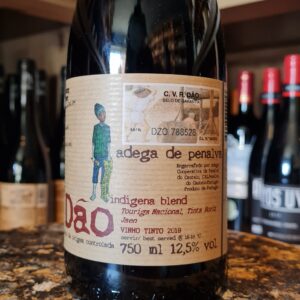 Adega de Penalva wines are delicious everyday examples of one of Portugal’s most intriguing appellations — the Dão. Perched above the Dão river itself as it snakes through its granite valleys, the Adega de Penalva is one of the leading cooperatives in the area, boasting around a thousand member growers. It’s important to note, though, that the average holding per member amounts to barely over a hectare—a figure that reminds us how tenaciously much of rural Portugal clings to its old ways. (On that note, all fruit destined for the ‘Indigena’ bottlings is hand-harvested.) Since its founding in the 1960s, the Adega has been collecting its members’ grapes and producing clean, characterful wines with a minimum of fuss that showcase real regional typicity while remaining extremely attractively priced. Adega de Penalva Indigena Dao Tinto is made with 40% Touriga Nacional, 30% Tinta Roriz (Tempranillo), and 30% Jaen (Mencía). Hand-harvested, fully destemmed and aged in a combination of stainless steel and concrete tank. Aromas of leather and blueberries lead to a palate full of dark fruits with cherry and raspberry notes. Pairs well with beef and lamb.
Adega de Penalva wines are delicious everyday examples of one of Portugal’s most intriguing appellations — the Dão. Perched above the Dão river itself as it snakes through its granite valleys, the Adega de Penalva is one of the leading cooperatives in the area, boasting around a thousand member growers. It’s important to note, though, that the average holding per member amounts to barely over a hectare—a figure that reminds us how tenaciously much of rural Portugal clings to its old ways. (On that note, all fruit destined for the ‘Indigena’ bottlings is hand-harvested.) Since its founding in the 1960s, the Adega has been collecting its members’ grapes and producing clean, characterful wines with a minimum of fuss that showcase real regional typicity while remaining extremely attractively priced. Adega de Penalva Indigena Dao Tinto is made with 40% Touriga Nacional, 30% Tinta Roriz (Tempranillo), and 30% Jaen (Mencía). Hand-harvested, fully destemmed and aged in a combination of stainless steel and concrete tank. Aromas of leather and blueberries lead to a palate full of dark fruits with cherry and raspberry notes. Pairs well with beef and lamb. -
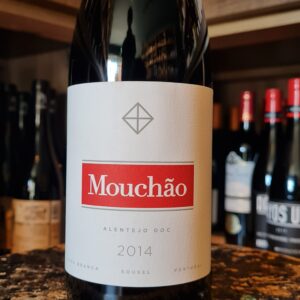 Herdade do Mouchao is a historic winery in Portugal’s Alentejo region that specialises in producing excellent red wines from the local Alicante Bouschet grape. The estate’s roots date back to the 19th century when Thomas Reynolds first moved from Porto to Alentejo to enter the prosperous cork-making industry. Later his grandson, John Reynolds saw an opportunity to start making both wine and corks and purchased the 900 hectare Herdade do Mouchao estate. Vineyards were planted, in 1901 he built a high-ceilinged adobe winery (or “adega”) and a distillery was added to the winery in 1929, where until today Mouchão's pommace brandy is produced. Unfortunately the estate was seized in 1974 by order of the powerful military government ruling the country at the time. The Reynolds were only able to regain the estate in 1985 and today the family works around 38 hectares of vines. Today, the Herdade do Mouchão continues to be run by the descendants of the original family whose cellar and vineyard workers have been with them for generations. The process is, as it always has been, unhurried (There is alway Manana). The grape varieties are local, picked by hand and foot-trodden. In the ever-changing world of winemaking, Herdade do Mouchão, remains a traditional, family-run winery.
Herdade do Mouchao is a historic winery in Portugal’s Alentejo region that specialises in producing excellent red wines from the local Alicante Bouschet grape. The estate’s roots date back to the 19th century when Thomas Reynolds first moved from Porto to Alentejo to enter the prosperous cork-making industry. Later his grandson, John Reynolds saw an opportunity to start making both wine and corks and purchased the 900 hectare Herdade do Mouchao estate. Vineyards were planted, in 1901 he built a high-ceilinged adobe winery (or “adega”) and a distillery was added to the winery in 1929, where until today Mouchão's pommace brandy is produced. Unfortunately the estate was seized in 1974 by order of the powerful military government ruling the country at the time. The Reynolds were only able to regain the estate in 1985 and today the family works around 38 hectares of vines. Today, the Herdade do Mouchão continues to be run by the descendants of the original family whose cellar and vineyard workers have been with them for generations. The process is, as it always has been, unhurried (There is alway Manana). The grape varieties are local, picked by hand and foot-trodden. In the ever-changing world of winemaking, Herdade do Mouchão, remains a traditional, family-run winery. -
Out of stock
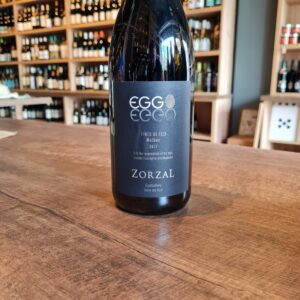 Zorzal, the Argentinian wine brand, was established in 2008, to reflect the immense wine potential of the Gualtallary region to the entire world. Ever since its inception, the group has been working hard so that the wines created here are true representations of the unique natural extravaganza of the Gualtallary region. Located in Tupungato towards the north of the Uco Valley in the Mendoza Province, this region is known for its high-altitude vineyards. Here, the vineyards are planted at a height of around 1200 to 1600m above sea level, which makes them the best place to produce terroir wines, the speciality of the Zorzal label. The Zorzal winery is set up in such a way that it uses sophisticated technology to ensure that the grapes are processed naturally with minimal use of machinery. The winery is constructed on four levels, to allow for natural transportation of the grapes with the help of gravity, so that the dependence on pumps would be reduced to a considerable extent. The use of roll fermenters, cement eggs and other advanced machinery for the grinding, fermenting and guarding processing ensure that the flavor and intensity of the fruits are retained even when the wines are bottled. The temperature-controlled French oak barrels, foudres and cement eggs used in the winery, help to keep the balance, purity, life and minerality of the wines intact. The Eggo line of wines is the modern range of wines that use cement eggs for fermentation and ageing. The conceptual range of wines aren’t limited by the Gualtallary region and are created by passionate winemakers.
Zorzal, the Argentinian wine brand, was established in 2008, to reflect the immense wine potential of the Gualtallary region to the entire world. Ever since its inception, the group has been working hard so that the wines created here are true representations of the unique natural extravaganza of the Gualtallary region. Located in Tupungato towards the north of the Uco Valley in the Mendoza Province, this region is known for its high-altitude vineyards. Here, the vineyards are planted at a height of around 1200 to 1600m above sea level, which makes them the best place to produce terroir wines, the speciality of the Zorzal label. The Zorzal winery is set up in such a way that it uses sophisticated technology to ensure that the grapes are processed naturally with minimal use of machinery. The winery is constructed on four levels, to allow for natural transportation of the grapes with the help of gravity, so that the dependence on pumps would be reduced to a considerable extent. The use of roll fermenters, cement eggs and other advanced machinery for the grinding, fermenting and guarding processing ensure that the flavor and intensity of the fruits are retained even when the wines are bottled. The temperature-controlled French oak barrels, foudres and cement eggs used in the winery, help to keep the balance, purity, life and minerality of the wines intact. The Eggo line of wines is the modern range of wines that use cement eggs for fermentation and ageing. The conceptual range of wines aren’t limited by the Gualtallary region and are created by passionate winemakers. -
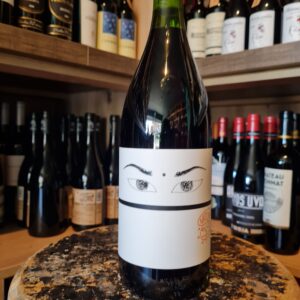 The Nat’Cool project is an innovative concept initiated by Niepoort, in which various producers came together to create light and easy-to-drink wines. This is the original Nat’Cool wine, from the Bairrada region where they are showcasing the elegant side of the Baga grape variety. Hands off wine making, Carbonic Maceration, soft, light expression of Baga. Baga is a touch grape which is very high in tannin and generally needs time to mature and express its delightful floral aromas and fruit character. However, here in the Bairrada with 80-100 year old vines and hands off wine making including carbonic maceration (which generally extracts less tannin), the astringent elements of the Baga grape are tamed and the resulting wine is pure juicy, fresh red with delicious wild berries, floral notes and light body. This wine is great fun, on opening there is a note of spritz but this vanishes quickly, I reckon it is just the wine's youthful spirit leaping from the bottle on its re-acquaintance with oxygen. What follows is very easy, juicy red which can be enjoyed chilled in the summer with a BBQ or at room temp in the autumn with some field mushrooms. The litre bottle and 12.5% abv is fantastic as between two, you have enough wine and not enough booze to make you suffer for it. A great addition to Niepoort portfolio, the wines go from strength to strength.
The Nat’Cool project is an innovative concept initiated by Niepoort, in which various producers came together to create light and easy-to-drink wines. This is the original Nat’Cool wine, from the Bairrada region where they are showcasing the elegant side of the Baga grape variety. Hands off wine making, Carbonic Maceration, soft, light expression of Baga. Baga is a touch grape which is very high in tannin and generally needs time to mature and express its delightful floral aromas and fruit character. However, here in the Bairrada with 80-100 year old vines and hands off wine making including carbonic maceration (which generally extracts less tannin), the astringent elements of the Baga grape are tamed and the resulting wine is pure juicy, fresh red with delicious wild berries, floral notes and light body. This wine is great fun, on opening there is a note of spritz but this vanishes quickly, I reckon it is just the wine's youthful spirit leaping from the bottle on its re-acquaintance with oxygen. What follows is very easy, juicy red which can be enjoyed chilled in the summer with a BBQ or at room temp in the autumn with some field mushrooms. The litre bottle and 12.5% abv is fantastic as between two, you have enough wine and not enough booze to make you suffer for it. A great addition to Niepoort portfolio, the wines go from strength to strength. -
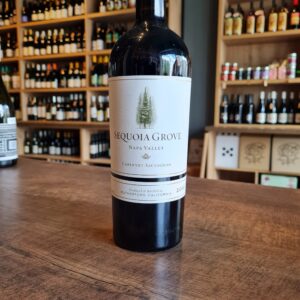 Family-owned winery Sequoia Grove was founded in 1979 in a 110-year old barn beneath a grove of Sequoia trees in Rutherford. Michael Trujillo joined the winery as assistant winemaker in 1981, becoming director of winemaking in 2002. His philosophy is based on balance in the vineyard, planting different blocks with different clones, and farming without pesticides. The family have been working with their partner growers for decades which gives them access to the very best quality fruit each year and allows them to create this complex wine which truly expresses the Rutherford terroir. The young wine is aged in oak barrel for 20 months which adds sweet spice notes and extra complexity to the finished bottling. The rich, powerful flavor profile makes this a winner with lovers of big, bold reds and a great match for red meats. Drink now through to 2030. Decanting is always recommended but is not a must
Family-owned winery Sequoia Grove was founded in 1979 in a 110-year old barn beneath a grove of Sequoia trees in Rutherford. Michael Trujillo joined the winery as assistant winemaker in 1981, becoming director of winemaking in 2002. His philosophy is based on balance in the vineyard, planting different blocks with different clones, and farming without pesticides. The family have been working with their partner growers for decades which gives them access to the very best quality fruit each year and allows them to create this complex wine which truly expresses the Rutherford terroir. The young wine is aged in oak barrel for 20 months which adds sweet spice notes and extra complexity to the finished bottling. The rich, powerful flavor profile makes this a winner with lovers of big, bold reds and a great match for red meats. Drink now through to 2030. Decanting is always recommended but is not a must -
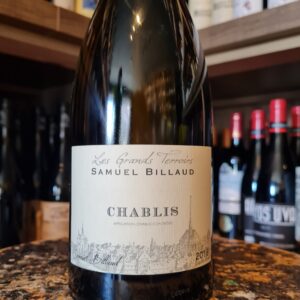 This excellent Chablis has a fine balance of ripe fruit and thrilling acidity. With a great length on the finish, it will develop with age in the cellar if you can keep your hands off it. Sourced from three parcels of vines in different sectors of the appellation; Les Pargues towards the village of Préhy, Les Cartes between the premiers crus of Vaillons and Montmains where the vines are 60 years old and Bas de Chapelots just below Montée de Tonnerre. Samuel Billaud is one of Chablis’ greatest winemakers. For twenty years he was responsible for the superb quality of wine at the family estate, Domaine Billaud-Simon, before setting up his own winery in 2009, where he produces a range of wines from several of the region’s finest sites. In 2014 he recovered his share of the Billaud-Simon vines which he now vinifies and bottles under his own name.
This excellent Chablis has a fine balance of ripe fruit and thrilling acidity. With a great length on the finish, it will develop with age in the cellar if you can keep your hands off it. Sourced from three parcels of vines in different sectors of the appellation; Les Pargues towards the village of Préhy, Les Cartes between the premiers crus of Vaillons and Montmains where the vines are 60 years old and Bas de Chapelots just below Montée de Tonnerre. Samuel Billaud is one of Chablis’ greatest winemakers. For twenty years he was responsible for the superb quality of wine at the family estate, Domaine Billaud-Simon, before setting up his own winery in 2009, where he produces a range of wines from several of the region’s finest sites. In 2014 he recovered his share of the Billaud-Simon vines which he now vinifies and bottles under his own name. -
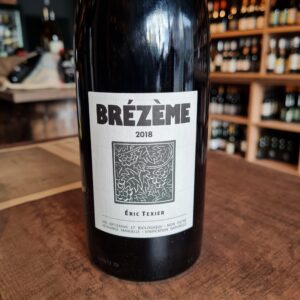 The 2019 Cotes du Rhone Brézème is a big, well structured wine that retains the freshness and lively character always present in this cuvee. The wine was vinified naturally, without added sulfur. The wine shows vivid aromas of blackberry and black cherry with hints of musk, blueberry, earth and citrus. The palate is deep and textured with earthy black fruits, bitter chocolate and mineral flavours, quite pure and long. Serve now, slightly chilled, with grilled meats, tagines and full-flavored cheeses, or cellar fo five to ten years or more.
The 2019 Cotes du Rhone Brézème is a big, well structured wine that retains the freshness and lively character always present in this cuvee. The wine was vinified naturally, without added sulfur. The wine shows vivid aromas of blackberry and black cherry with hints of musk, blueberry, earth and citrus. The palate is deep and textured with earthy black fruits, bitter chocolate and mineral flavours, quite pure and long. Serve now, slightly chilled, with grilled meats, tagines and full-flavored cheeses, or cellar fo five to ten years or more. -
Out of stock
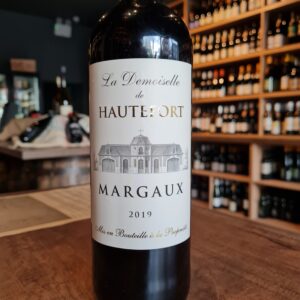 Slender and racy length, beautiful smoothness, noble freshness, very fragrant, without weakness in terms of the body and with the extension of high quality terroirs.
Slender and racy length, beautiful smoothness, noble freshness, very fragrant, without weakness in terms of the body and with the extension of high quality terroirs. -
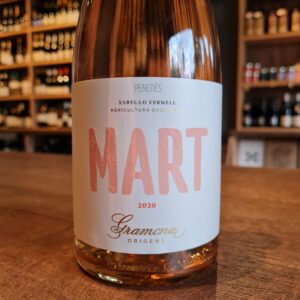 Biodynamic Rosé made from pink skinned Xarel.lo – a variety indigenous to the Penedès region that has been brought back from the brink of extinction. Mediterranean fruits and herbs. Delicate and complex. Recommended spicy dishes such as those found in Japanese, Nikkei, Caribbean and South American cuisine. Rice dishes and seafood. Excellent for aperitifs.
Biodynamic Rosé made from pink skinned Xarel.lo – a variety indigenous to the Penedès region that has been brought back from the brink of extinction. Mediterranean fruits and herbs. Delicate and complex. Recommended spicy dishes such as those found in Japanese, Nikkei, Caribbean and South American cuisine. Rice dishes and seafood. Excellent for aperitifs. -
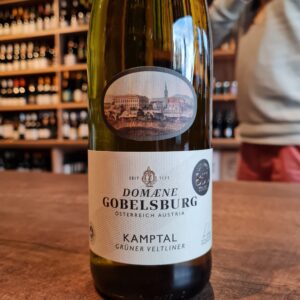 Like every vintage, the Grüner Veltliner Domain Gobelsburg is the benchmark wine in this price range, balanced, juicy and delicate, that's how Veltliner is fun. Delicate spice on the nose with some Boskop apple, Williams pear and herbaceous hints of thyme and mint. On the palate a rather soft texture, gentle fruit with a nice acidic accompaniment, delicately piquant pepper, then some minerality comes through. Again one of the most harmonious entry-level Veltliners of this vintage!
Like every vintage, the Grüner Veltliner Domain Gobelsburg is the benchmark wine in this price range, balanced, juicy and delicate, that's how Veltliner is fun. Delicate spice on the nose with some Boskop apple, Williams pear and herbaceous hints of thyme and mint. On the palate a rather soft texture, gentle fruit with a nice acidic accompaniment, delicately piquant pepper, then some minerality comes through. Again one of the most harmonious entry-level Veltliners of this vintage! -
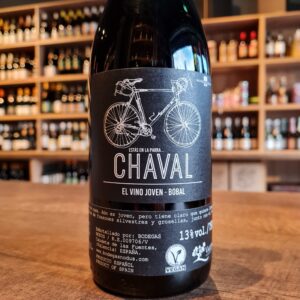 Young red wine with very fruity notes from the bobal. 100% organic wine with Vegan certification. Monitoring of maturation to determine the optimal time of harvest. Selection of grapes, controlled fermentation at low temperature and long maceration in stainless steel tanks. It came with very fruity notes from the bobal. Try it with pizza; couscous, rocket, roasted squash and spicy yogurt; or roast lamb.
Young red wine with very fruity notes from the bobal. 100% organic wine with Vegan certification. Monitoring of maturation to determine the optimal time of harvest. Selection of grapes, controlled fermentation at low temperature and long maceration in stainless steel tanks. It came with very fruity notes from the bobal. Try it with pizza; couscous, rocket, roasted squash and spicy yogurt; or roast lamb. -
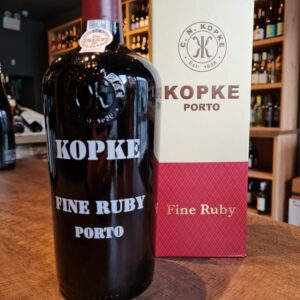 There are special places in the world. Kopke found one of them. Quinta de São Luiz is located on the left bank of the river Douro, near Pinhão, in the parish of Tabuaço. It is an imposing estate, considered one of the most emblematic of the Douro region. The Quinta has gone through two major changes: on the one hand, the construction of the Bagaúste dam, with the consequent rise of the water level and the loss of vineyard land; on the other, the enlargement of the total area with the acquisition of several other properties in the area. The estate is made up of 125 hectares, 90 of which are planted with vines. The main grape varieties grown here are Touriga Nacional, Touriga Franca, Tinta Roriz, Tinta Cão. There are also small plots of Tinta Barroca and Souzão. The vines are classified as A, the highest grade in the Demarcated Region of the Douro.
There are special places in the world. Kopke found one of them. Quinta de São Luiz is located on the left bank of the river Douro, near Pinhão, in the parish of Tabuaço. It is an imposing estate, considered one of the most emblematic of the Douro region. The Quinta has gone through two major changes: on the one hand, the construction of the Bagaúste dam, with the consequent rise of the water level and the loss of vineyard land; on the other, the enlargement of the total area with the acquisition of several other properties in the area. The estate is made up of 125 hectares, 90 of which are planted with vines. The main grape varieties grown here are Touriga Nacional, Touriga Franca, Tinta Roriz, Tinta Cão. There are also small plots of Tinta Barroca and Souzão. The vines are classified as A, the highest grade in the Demarcated Region of the Douro. -
 We felt this was the most appropriate name for this case as you will be the juror of these 12 bottles of wine. With that in mind we made a 'case' on this one that we think you will enjoy and scrutinize each every single one of them with a delightful outcome. In this case you will find 5 whites, 1 bubbly rosé and 6 delish reds. We rest our case! Whites Muralhas Vinho Verde - The wine is made from the Alvarinho (predominant) and Trajadura varieties, indigenous to Portugal and the region, more specifically. The dry Muralhas de Moncao Vinho Verde never seems intrusive, but is soft, elegant and harmonious with no wood whatsoever. The wine goes well not only as an aperitif, but also with salads, seafood, fish dishes and white meat. Merinas Verdejo Organic - Lovely Organic from Castilla de La Mancha is an easy going, fruit forward wine. Generous flavours of citrus, peach, pear, lychee with a hint of jasmine, orange blossom and fennel. Fruity, bright and lively. Goes down very well on its own and pairs nicely with fish, chicken, vegetarian dishes and curry. Willowglen Gewürztraminer Riesling - Two of our favourite white grapes Gewürztraminer (80%) and Riesling (20%) make a delightful pairing in this Australian wine. As a result, you get an off dry floral wine with aromas of Turkish delight and rose petals with a zesty acidity. A popular style offering delicious aromatics making it the perfect choice for Thai or Indian food. Las Sastreria Garnacha Blanca - This delicious wine, belonging to the Haute Couture Print Collection, has been made with white Grenache grapes. It combines modernity and fruit character with the elegance of the Mediterranean style of this variety. Ideal with appetizers, seafood entrees, fish, white meat and pasta. Les Anges Sauvignon Blanc - Another one that won’t disappoint. This is a Val de Loire dry white. In Sancerre Kingdom this is an entry level Sauvignon Blanc that doesn't over promised but over delivers. Elegant and refreshing with a good burst of fruit and a touch of minerality. Bright, fresh yellow color. Flowery on the palate, fresh and delicate, fruity with a smooth finish. Produced thinking on sustainability it's a local wine for local people that got it's foot out of the region due to it's simplicity and quality La Jara Frizzante Rosé - A totally irresistible semi-sparkling Italian rosé from one of our favourite Prosecco producers, La Jara, but in this case they use a little bit of the red grape, Raboso, to give the wine its lovely pale coral colour. Dry on the palate and bursting with fresh strawberry notes reined in by the pithy bite of pink grapefruit. At 10.5% this is the wine to drink in the park with socially distanced friends, or with lunch in the garden before you’re really meant to be getting stuck into the vino! Bodegas Matsu El Picaro - The name El Picaro translates to The Rogue, and Matsu is the Japanese word meaning to wait, referencing the balance of attitude and patience that goes into making this wine. Fruit is hand harvested from a selection of 90-year-old vineyards in Toro (Spain) that are cultivated using biodynamic techniques. It has an intense aroma in which one can find blackberry, blueberry compote, cocoa and toasted almond characters. It is succulent and supple, and displays excellent fruit intensity, wonderfully supported by silky texture and fine tannins. The wine is fleshy and generous and will be a crowd pleaser. Piedra Negra Malbec -François Lurton vineyards are situated in the highlands (1,100 m) and semi-desert (poor alluvial gravels reminiscent of those of Pessac-Léognan), in the plains at the foot of the mountain range of the Andes: the Uco Valley. Thanks to his experience, acquired all over the world, he practices an environmentally friendly viticulture and produces extraordinary wines here that have a unique personality that combines freshness and concentration. Thanks to the climatic conditions of this high altitude desert and very draining and not very fertile alluvial gravel soils, the wines of the Uco Valley, and especially those of Los Chacayes, are quite unique and François Lurton vision was a success. This Malbec has a an outstanding quality/price ratio and it is definitely a contender not only for those summer barbecues but also for those cold winter nights. Pair it with Carpaccio, Paella, Iberian ham, red pepper stuffed with cheese and Hummus. Herdade Da Pimenta Colheita 2019 - The Portuguese rising region Alentejo is just made for such quality wines. The strong temperature differences between day and night temperatures have a beneficial effect on the nutrient absorption, acidity and sugar content of the grapes. This Pimenta Colheita Alentejo from Herdade da Pimenta shows deep ruby red with violet nuances. A complex scent of blueberries, white flowers and fine vanilla/wood aromas accompany the elegant fruit of the Pimenta Colheita. Chocolate and coconut notes are perceived on the palate, accompanied by delicate herbal and spicy notes, complex and balanced. The oak shows up in the Pimenta Colheita in a discreet caramel note with pleasant, fine-grained and soft tannins. The finish is concentrated, spicy and long-lasting. Château Haut Gravelier - Château Gravelier is located on superb hillsides on the edge of Entre Deux Mers, Bordeaux. Classic French blend of 70% Merlot 30% Cabernet Sauvignon. With deep colour, classic structure and unusually ripe flavours, this is classic claret to serve with roast beef, duck or T-bone steak. Heartland Stickleback 2016 Shiraz - This intense Shiraz swims against the current and harnesses the best that Australia has to offer. It is a wine of style and substance, offering dark fruits and hints of herbs. Col Di Sasso Castello Banfi - One of the best known and appreciated Banfi labels in the world, Col di Sasso, which translates to "Stony Hill", is a blend of Cabernet Sauvignon and Sangiovese cultivated on the most rocky and impervious slopes of the Banfi estate in Montalcino. The perfect marriage between these two grapes gives birth to a youthful yet concentrated and extremely fruity red wine. Great place to stay in Tuscany if you get a chance.
We felt this was the most appropriate name for this case as you will be the juror of these 12 bottles of wine. With that in mind we made a 'case' on this one that we think you will enjoy and scrutinize each every single one of them with a delightful outcome. In this case you will find 5 whites, 1 bubbly rosé and 6 delish reds. We rest our case! Whites Muralhas Vinho Verde - The wine is made from the Alvarinho (predominant) and Trajadura varieties, indigenous to Portugal and the region, more specifically. The dry Muralhas de Moncao Vinho Verde never seems intrusive, but is soft, elegant and harmonious with no wood whatsoever. The wine goes well not only as an aperitif, but also with salads, seafood, fish dishes and white meat. Merinas Verdejo Organic - Lovely Organic from Castilla de La Mancha is an easy going, fruit forward wine. Generous flavours of citrus, peach, pear, lychee with a hint of jasmine, orange blossom and fennel. Fruity, bright and lively. Goes down very well on its own and pairs nicely with fish, chicken, vegetarian dishes and curry. Willowglen Gewürztraminer Riesling - Two of our favourite white grapes Gewürztraminer (80%) and Riesling (20%) make a delightful pairing in this Australian wine. As a result, you get an off dry floral wine with aromas of Turkish delight and rose petals with a zesty acidity. A popular style offering delicious aromatics making it the perfect choice for Thai or Indian food. Las Sastreria Garnacha Blanca - This delicious wine, belonging to the Haute Couture Print Collection, has been made with white Grenache grapes. It combines modernity and fruit character with the elegance of the Mediterranean style of this variety. Ideal with appetizers, seafood entrees, fish, white meat and pasta. Les Anges Sauvignon Blanc - Another one that won’t disappoint. This is a Val de Loire dry white. In Sancerre Kingdom this is an entry level Sauvignon Blanc that doesn't over promised but over delivers. Elegant and refreshing with a good burst of fruit and a touch of minerality. Bright, fresh yellow color. Flowery on the palate, fresh and delicate, fruity with a smooth finish. Produced thinking on sustainability it's a local wine for local people that got it's foot out of the region due to it's simplicity and quality La Jara Frizzante Rosé - A totally irresistible semi-sparkling Italian rosé from one of our favourite Prosecco producers, La Jara, but in this case they use a little bit of the red grape, Raboso, to give the wine its lovely pale coral colour. Dry on the palate and bursting with fresh strawberry notes reined in by the pithy bite of pink grapefruit. At 10.5% this is the wine to drink in the park with socially distanced friends, or with lunch in the garden before you’re really meant to be getting stuck into the vino! Bodegas Matsu El Picaro - The name El Picaro translates to The Rogue, and Matsu is the Japanese word meaning to wait, referencing the balance of attitude and patience that goes into making this wine. Fruit is hand harvested from a selection of 90-year-old vineyards in Toro (Spain) that are cultivated using biodynamic techniques. It has an intense aroma in which one can find blackberry, blueberry compote, cocoa and toasted almond characters. It is succulent and supple, and displays excellent fruit intensity, wonderfully supported by silky texture and fine tannins. The wine is fleshy and generous and will be a crowd pleaser. Piedra Negra Malbec -François Lurton vineyards are situated in the highlands (1,100 m) and semi-desert (poor alluvial gravels reminiscent of those of Pessac-Léognan), in the plains at the foot of the mountain range of the Andes: the Uco Valley. Thanks to his experience, acquired all over the world, he practices an environmentally friendly viticulture and produces extraordinary wines here that have a unique personality that combines freshness and concentration. Thanks to the climatic conditions of this high altitude desert and very draining and not very fertile alluvial gravel soils, the wines of the Uco Valley, and especially those of Los Chacayes, are quite unique and François Lurton vision was a success. This Malbec has a an outstanding quality/price ratio and it is definitely a contender not only for those summer barbecues but also for those cold winter nights. Pair it with Carpaccio, Paella, Iberian ham, red pepper stuffed with cheese and Hummus. Herdade Da Pimenta Colheita 2019 - The Portuguese rising region Alentejo is just made for such quality wines. The strong temperature differences between day and night temperatures have a beneficial effect on the nutrient absorption, acidity and sugar content of the grapes. This Pimenta Colheita Alentejo from Herdade da Pimenta shows deep ruby red with violet nuances. A complex scent of blueberries, white flowers and fine vanilla/wood aromas accompany the elegant fruit of the Pimenta Colheita. Chocolate and coconut notes are perceived on the palate, accompanied by delicate herbal and spicy notes, complex and balanced. The oak shows up in the Pimenta Colheita in a discreet caramel note with pleasant, fine-grained and soft tannins. The finish is concentrated, spicy and long-lasting. Château Haut Gravelier - Château Gravelier is located on superb hillsides on the edge of Entre Deux Mers, Bordeaux. Classic French blend of 70% Merlot 30% Cabernet Sauvignon. With deep colour, classic structure and unusually ripe flavours, this is classic claret to serve with roast beef, duck or T-bone steak. Heartland Stickleback 2016 Shiraz - This intense Shiraz swims against the current and harnesses the best that Australia has to offer. It is a wine of style and substance, offering dark fruits and hints of herbs. Col Di Sasso Castello Banfi - One of the best known and appreciated Banfi labels in the world, Col di Sasso, which translates to "Stony Hill", is a blend of Cabernet Sauvignon and Sangiovese cultivated on the most rocky and impervious slopes of the Banfi estate in Montalcino. The perfect marriage between these two grapes gives birth to a youthful yet concentrated and extremely fruity red wine. Great place to stay in Tuscany if you get a chance. -
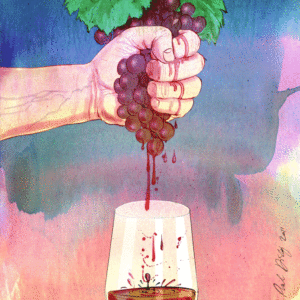 More and more wine producers are adopting organic winemaking as the way forward, and they are stunning wines out there. There are many reasons why people enjoy organic wines. For some, it became a way of life, for others it just “feels right”. The old fear ''I don't trust organic wines'' or ''They all taste the same'' is disappearing, with more people converting to organic wines as there is more knowledge, greater quality and a heavily regulated market that will certify these wines. We brought you a case for any occasion with easy drinking 6 bottles. They say natural wine can be tricky to understand, well no expertise needed with these wines. An essential mix of light, low sulphite, crisp fresh white and a soft, pleasurable red. All organic, all vegan, all tasty. No need to drown in the complexity of natural wine, just try these and enjoy. Bardos Rueda Verdejo - This artisan verdejo is part of the reason the Spanish Rueda region has become quite popular. Made unapologetically, you will find yourself like a true “Bard” drinking this wine. Delicious! Sepp Gruner Veltliner - All Sepp Moser wines have been organic (and all estate wines biodynamic) since 2007. Delicate aromas of pear, kiwi, apricot and white spice. On the palate stone fruit flavours and white pepper lead to a gently textured, mineral and citrus finish. Combel La Serre L'Epatant Antidote Rosé - 100% French Malbec (known in Cahors as Auxerrois). The vines are 40 years old, grown on clay and limestone soils. Fermentation and aging take place in small tanks."The Splendid Antidote to the Heat of the Causse" is the amusing and appropriate name of this refreshing rosé. (The Causse is the high limestone plateau around Cahors, which gets brutally hot in the summer.) The wine shows a pretty pink/orange color and aromas of ripe cherry, raspberry and cassis with citrus and spice. It precedes a palate that is both fleshy, suave and savory, with formidable gluttony. Both easy and winey, it's an absolute delight! Roche-Audran, ‘Nature’ Còtes-du-Rhône - Vincent Rochette comes from a long line of grape growers rather than winemakers up until 1998 when he bucked that trend by investing in a cellar and the necessary equipment to allow him to vinify his own grapes . He uses only natural products in the vineyard and carries out all his work in keeping with the cosmic cycles of the earth, not only among the vines but also in the cellar. One of his most interesting cuvées is the Côte du Rhone ‘Nature’, which has had no sulphites added at any stage of the winemaking process. Due to the fact that sulphites are naturally present in grapes, there are still 9mg present (below the legal 10mg limit which is required to state that the wine contains sulphites), an insignificant figure compared to the conventional levels found in most wines. The result is a wine that is simply a pure expression of Grenache, Carignan, Syrah and Mourvèdre. Harvesting, racking and bottling are all carried out in accordance with cosmic rhythms. Pitti Pittnauer Red - High on the hills of Austria there is more than just a lonely goat herd – there is also a fantastic winery, considered one of the country’s best. Pittnauer has a long winemaking tradition in the region, and in 2006 moved to more biodynamic practices. The results are delicious, environmentally friendly wines with years of experience behind them. Now prepare yourself for some varieties you’ve probably never heard of – Pittnauer’s Pitti Red Blend is made from blaufränkisch and Zweigelt grapes with a small quantity of Merlot added to the mixture. Filipa Pato Dinâmica Baga 2019 - Filipa Pato is the confirmation of the old saying "son of fish knows how to swim". Although she followed the footsteps of her father Luís Pato, Filipa went on her own and started a project in 2001. The success was immediate, and soon she rose to the status of one of the most brilliant winemakers in Portugal. Her wines are the result of Filipa's innovative and brilliant spirit. They were quickly at the forefront of national and international criticism. Dinâmica Baga is a wine that, due to its proximity to the sea, presents an intense, complex and elegant aroma with a touch of fruit such as strawberry and plum, nuances of liquorice and notes of spices such as black pepper, bay leaves and thyme, and balanced acidity. In the mouth it is fruity, with a beautiful structure and velvety texture, with a very fresh and inviting finish.
More and more wine producers are adopting organic winemaking as the way forward, and they are stunning wines out there. There are many reasons why people enjoy organic wines. For some, it became a way of life, for others it just “feels right”. The old fear ''I don't trust organic wines'' or ''They all taste the same'' is disappearing, with more people converting to organic wines as there is more knowledge, greater quality and a heavily regulated market that will certify these wines. We brought you a case for any occasion with easy drinking 6 bottles. They say natural wine can be tricky to understand, well no expertise needed with these wines. An essential mix of light, low sulphite, crisp fresh white and a soft, pleasurable red. All organic, all vegan, all tasty. No need to drown in the complexity of natural wine, just try these and enjoy. Bardos Rueda Verdejo - This artisan verdejo is part of the reason the Spanish Rueda region has become quite popular. Made unapologetically, you will find yourself like a true “Bard” drinking this wine. Delicious! Sepp Gruner Veltliner - All Sepp Moser wines have been organic (and all estate wines biodynamic) since 2007. Delicate aromas of pear, kiwi, apricot and white spice. On the palate stone fruit flavours and white pepper lead to a gently textured, mineral and citrus finish. Combel La Serre L'Epatant Antidote Rosé - 100% French Malbec (known in Cahors as Auxerrois). The vines are 40 years old, grown on clay and limestone soils. Fermentation and aging take place in small tanks."The Splendid Antidote to the Heat of the Causse" is the amusing and appropriate name of this refreshing rosé. (The Causse is the high limestone plateau around Cahors, which gets brutally hot in the summer.) The wine shows a pretty pink/orange color and aromas of ripe cherry, raspberry and cassis with citrus and spice. It precedes a palate that is both fleshy, suave and savory, with formidable gluttony. Both easy and winey, it's an absolute delight! Roche-Audran, ‘Nature’ Còtes-du-Rhône - Vincent Rochette comes from a long line of grape growers rather than winemakers up until 1998 when he bucked that trend by investing in a cellar and the necessary equipment to allow him to vinify his own grapes . He uses only natural products in the vineyard and carries out all his work in keeping with the cosmic cycles of the earth, not only among the vines but also in the cellar. One of his most interesting cuvées is the Côte du Rhone ‘Nature’, which has had no sulphites added at any stage of the winemaking process. Due to the fact that sulphites are naturally present in grapes, there are still 9mg present (below the legal 10mg limit which is required to state that the wine contains sulphites), an insignificant figure compared to the conventional levels found in most wines. The result is a wine that is simply a pure expression of Grenache, Carignan, Syrah and Mourvèdre. Harvesting, racking and bottling are all carried out in accordance with cosmic rhythms. Pitti Pittnauer Red - High on the hills of Austria there is more than just a lonely goat herd – there is also a fantastic winery, considered one of the country’s best. Pittnauer has a long winemaking tradition in the region, and in 2006 moved to more biodynamic practices. The results are delicious, environmentally friendly wines with years of experience behind them. Now prepare yourself for some varieties you’ve probably never heard of – Pittnauer’s Pitti Red Blend is made from blaufränkisch and Zweigelt grapes with a small quantity of Merlot added to the mixture. Filipa Pato Dinâmica Baga 2019 - Filipa Pato is the confirmation of the old saying "son of fish knows how to swim". Although she followed the footsteps of her father Luís Pato, Filipa went on her own and started a project in 2001. The success was immediate, and soon she rose to the status of one of the most brilliant winemakers in Portugal. Her wines are the result of Filipa's innovative and brilliant spirit. They were quickly at the forefront of national and international criticism. Dinâmica Baga is a wine that, due to its proximity to the sea, presents an intense, complex and elegant aroma with a touch of fruit such as strawberry and plum, nuances of liquorice and notes of spices such as black pepper, bay leaves and thyme, and balanced acidity. In the mouth it is fruity, with a beautiful structure and velvety texture, with a very fresh and inviting finish. -
 For those red wine lovers. You know what I mean by red lips! We brought together for you a red wine case of 6 bottles full of character, lavish richness, booming dark fruits, warming spice flavours, and velvet-smooth down to the very last drop. With this case you will travel from Portugal, Spain through France and Italy all the way to California. No doubt you will develop some red wine lips... Lab Tinto Lisboa - Lab tested and Lab approved! Full bodied, red produced on the coast of Lisbon, is smooth and is very aromatic with notes of ripe black and red fruits. On the palate, juicy plums and dark berry fruit flavour with plenty of fresh yet fine tannins that take over at the finish, along with flavours of spice and liquorice. It is not a top shelf wine but it does punch above its weight. Michel Chapoutier Marius - As Marius, Michel Chapoutier’s great-grandfather, always said ‘A good wine is one that beckons us to take another sip’. This wine carries this message and reflects the warmth of the southern french terroirs in which they are rooted. Dark red, dense, clear wine with deep purple shimmer. On the nose: powerful, complex, dark, spicy, red berries, delicate floral note. Château Haut Gravelier - Château Gravelier is located on superb hillsides on the edge of Entre Deux Mers, Bordeaux. Classic French blend of 70% Merlot 30% Cabernet Sauvignon. With deep colour, classic structure and unusually ripe flavours, this is classic claret to serve with roast beef, duck or T-bone steak. Palacio del Camino Crianza Rioja - The simple enjoyment of a really good Rioja is sometimes forgotten. But here one is, great with food, but honestly, just as great in a large glass on a sofa with nowhere to be and nothing to do. An elegant fruity wine with vanilla, spices and red fruit. Monte del Frá Bardolino DOC - This charming and typical red wine from Veneto is a cuvée made from 65% Corvina, 30% Rondinella and 5% Sangiovese, the usual suspects as Italian red grape varieties go. On the nose exudes aromas of different types of cherries, raspberries and strawberries. A whole range of spicy overtones and undertones play around this fruity core: cloves, cinnamon, violets and pepper. Tannins and fruit acid are perfectly coordinated. In the finale, some more cinnamon and black pepper. I would pair this one with pasta or your favourite comfort food. Beringer Zinfandel California - A Zin that definitely portrays some Classic California ripeness. Ripe blueberries, blackberries, plums, a hint of smoky and mineral characters and a touch perfumed (dried floral notes) on the nose. On the palate you'll find that smoke and berry ripeness coming through, with a little tangy raspberry adding to a lengthy finish. Medium plus body with a silky mouthfeel, smooth light tannins and luscious acidity. I love Zins with a juicy bacon and smoked cheddar burger or with your favourite pizza. This one should not disappoint!
For those red wine lovers. You know what I mean by red lips! We brought together for you a red wine case of 6 bottles full of character, lavish richness, booming dark fruits, warming spice flavours, and velvet-smooth down to the very last drop. With this case you will travel from Portugal, Spain through France and Italy all the way to California. No doubt you will develop some red wine lips... Lab Tinto Lisboa - Lab tested and Lab approved! Full bodied, red produced on the coast of Lisbon, is smooth and is very aromatic with notes of ripe black and red fruits. On the palate, juicy plums and dark berry fruit flavour with plenty of fresh yet fine tannins that take over at the finish, along with flavours of spice and liquorice. It is not a top shelf wine but it does punch above its weight. Michel Chapoutier Marius - As Marius, Michel Chapoutier’s great-grandfather, always said ‘A good wine is one that beckons us to take another sip’. This wine carries this message and reflects the warmth of the southern french terroirs in which they are rooted. Dark red, dense, clear wine with deep purple shimmer. On the nose: powerful, complex, dark, spicy, red berries, delicate floral note. Château Haut Gravelier - Château Gravelier is located on superb hillsides on the edge of Entre Deux Mers, Bordeaux. Classic French blend of 70% Merlot 30% Cabernet Sauvignon. With deep colour, classic structure and unusually ripe flavours, this is classic claret to serve with roast beef, duck or T-bone steak. Palacio del Camino Crianza Rioja - The simple enjoyment of a really good Rioja is sometimes forgotten. But here one is, great with food, but honestly, just as great in a large glass on a sofa with nowhere to be and nothing to do. An elegant fruity wine with vanilla, spices and red fruit. Monte del Frá Bardolino DOC - This charming and typical red wine from Veneto is a cuvée made from 65% Corvina, 30% Rondinella and 5% Sangiovese, the usual suspects as Italian red grape varieties go. On the nose exudes aromas of different types of cherries, raspberries and strawberries. A whole range of spicy overtones and undertones play around this fruity core: cloves, cinnamon, violets and pepper. Tannins and fruit acid are perfectly coordinated. In the finale, some more cinnamon and black pepper. I would pair this one with pasta or your favourite comfort food. Beringer Zinfandel California - A Zin that definitely portrays some Classic California ripeness. Ripe blueberries, blackberries, plums, a hint of smoky and mineral characters and a touch perfumed (dried floral notes) on the nose. On the palate you'll find that smoke and berry ripeness coming through, with a little tangy raspberry adding to a lengthy finish. Medium plus body with a silky mouthfeel, smooth light tannins and luscious acidity. I love Zins with a juicy bacon and smoked cheddar burger or with your favourite pizza. This one should not disappoint! -
 Hello my enthusiastic brethren or should I say Oenophilians! (I've just butchered the word a lit bit but I am sure you can relate to it). Wine Oenophilia is a love of wine. In the strictest sense, oenophilia describes a disciplined devotion to wine, accompanying strict traditions of consumption and appreciation. Wine lovers are also known as wine aficionados and connoisseurs. Its the people who appreciate and collect wine, particularly grape wines from certain regions, varieties or production methods. Maybe someone like you... So in the spirit of Oenophilia, I have put together 6 wines for those wine aficionados that want to push the bar a little further and feel excited. Here you have 2 whites, 1 bubbly and 3 reds, all of them are totally different from each other, underrated, unique and perform superbly in their own categories. Whites: Celler del Roure Cullerot 2019- This "orange" wine from Valencia is produced by Pablo Calatayud from Celler del Roure and let's say he brought the entire winemaking process back to basics. This is a blend of six different grapes, of which three of them were revived from ancient vines that were no longer in use. The setting is in an ancient country estate outside of Moixent, in the Valencia region. For centuries this was a farm producing grain, almonds, olives and grapes for the production of olive oil and wine. This farm contained a large, stone, olive press and extensive subterranean cellar with dozens of intact 17th century amphorae. It took a few years of research and restoration but Pablo is using these clay vessels to make wine once again. Cullerot, which means tadpole, is the white that Pablo makes in the old cellar utilizing Verdil, Pedro Ximénez, Macabeo and Chardonnay from vines ranging in age from 15–70 years old. Whole cluster pressing, natural yeast fermentation and aging in amphorae seems familiar, but it is in fact, timeless. Moment of Silence by Blankbottle - Blankbottle is not bound to a specific wine area or wine style. It’s from many different vineyards, scattered across the Western Cape of South Africa, different regions, micro-climates, soil types, and ultimately leads to different wine styles. It is driven by quality, adventure, excitement and mystery. And at the centre of it all, are the guys in the vineyards, viticulturists, winemakers, family, friends and Blankbottle fans. Stunning, all rounder there is nothing you can fault in this wine. Aromas of candied lemon, cooked apple and mango with a core of minerality. Soft and voluptuous, it has a lovely ripeness and a fleshy, creamy mouthfeel, which leads to a perfect tangy freshness giving some zip to its otherwise mellow feel. Filipa Pato 3B Sparkling Rosé- The Filipa Pato 3B Sparkling Rosé is a delicious treat of a wine from one of my favorite winemakers in Portugal. Filipa Pato is the daughter of arguably one of Portugal's most famous winemakers, Luis Pato. She is also married to a very famous Belgian Sommelier William Wouters. Despite of all of these influences, she is a fantastic winemaker in her own right since 2001. Filipa became famous when she deviated from the local traditional methods and started producing unique wines out of local indigenous grapes (Baga & Bical) that are biodynamic with minimum intervention and true to themselves and their terroir . Filipa's mantra is 'vinhos autênticos sem maquilagem' – Authentic Wines Without Makeup. The color of the 3B Rosé is a beautiful light pink. It’s soft on the nose, with light yeast, mineral, rose and strawberry aromatics. The palate is quite dry, with firm mineral flavors complemented by lemon and light raspberry. The mouthfeel is fantastically bubbly. It’s a very tasty, mineral-centric sparkler. Niepoort Voyeur 1 Ltr- Never a winemaker to shy away from experimentation, Dirk Niepoort has spent the last few years trialling amphora vinification. This is the upshot of those experiments: the first release of a field blend of old-vine red and white grapes, which spent eight months fermenting and ageing in six 1000L clay amphorae. One of the aims of the project was to reset expectations of Douro reds - all power, body and muscle. Instead, Voyeur is all about freshness, lightness and elegance, clocking in at only 12.5% alcohol. There is plenty of complexity here, partly from the sheer number of varieties in the blend; partly from earthy amphora notes. But what’s most striking is the pure red fruit and delicate florality of the wine. Chill slightly before serving and savour the freshness. Susumaniello IGP Puglia - The winery "i Pàstini", located in the heart of the Valle d'Itria land, strives to maintain the wisdom of traditions even with modern winemaking techniques, thus managing to obtain the best of enology Puglia has to offer. The vines are imported from nearby Dalmatia, which is one of the most important indigenous vines of the Brindisi area. Its name (there are several theories) is due to the fact that, a long time ago, the young Susumaniello plant was particularly productive, so much so, that it was overloaded with bunches as if it were a donkey. This unknown wine is underrated but will impress for its uniqueness and test your knowledge on how wine in general should taste like. This is a succulent and voluptuous wine with intense aromas of coffee liqueur, dark berry fruits and cocoa. Chat Fou Côtes du Rhône by Éric Texier - If you were ever sceptical about Organic wines, you have to give this one a try! This wine is Artisanal, Organic, Biodynamic, unfined and unfiltered. All with the aim to do as little intervention as possible and to let the Terroir speak for itself. Eric Texier Chat Fou natural red wine is a coupage of Grenache Tinta, Clairette and Marsanne, from the well known region of Côtes du Rhône.Eric Texier is a vigneron from Brézème, a municipality in the northern area of the Rhone Valley. For every occasion, red and white meats, charcuterie and to impress your other half.
Hello my enthusiastic brethren or should I say Oenophilians! (I've just butchered the word a lit bit but I am sure you can relate to it). Wine Oenophilia is a love of wine. In the strictest sense, oenophilia describes a disciplined devotion to wine, accompanying strict traditions of consumption and appreciation. Wine lovers are also known as wine aficionados and connoisseurs. Its the people who appreciate and collect wine, particularly grape wines from certain regions, varieties or production methods. Maybe someone like you... So in the spirit of Oenophilia, I have put together 6 wines for those wine aficionados that want to push the bar a little further and feel excited. Here you have 2 whites, 1 bubbly and 3 reds, all of them are totally different from each other, underrated, unique and perform superbly in their own categories. Whites: Celler del Roure Cullerot 2019- This "orange" wine from Valencia is produced by Pablo Calatayud from Celler del Roure and let's say he brought the entire winemaking process back to basics. This is a blend of six different grapes, of which three of them were revived from ancient vines that were no longer in use. The setting is in an ancient country estate outside of Moixent, in the Valencia region. For centuries this was a farm producing grain, almonds, olives and grapes for the production of olive oil and wine. This farm contained a large, stone, olive press and extensive subterranean cellar with dozens of intact 17th century amphorae. It took a few years of research and restoration but Pablo is using these clay vessels to make wine once again. Cullerot, which means tadpole, is the white that Pablo makes in the old cellar utilizing Verdil, Pedro Ximénez, Macabeo and Chardonnay from vines ranging in age from 15–70 years old. Whole cluster pressing, natural yeast fermentation and aging in amphorae seems familiar, but it is in fact, timeless. Moment of Silence by Blankbottle - Blankbottle is not bound to a specific wine area or wine style. It’s from many different vineyards, scattered across the Western Cape of South Africa, different regions, micro-climates, soil types, and ultimately leads to different wine styles. It is driven by quality, adventure, excitement and mystery. And at the centre of it all, are the guys in the vineyards, viticulturists, winemakers, family, friends and Blankbottle fans. Stunning, all rounder there is nothing you can fault in this wine. Aromas of candied lemon, cooked apple and mango with a core of minerality. Soft and voluptuous, it has a lovely ripeness and a fleshy, creamy mouthfeel, which leads to a perfect tangy freshness giving some zip to its otherwise mellow feel. Filipa Pato 3B Sparkling Rosé- The Filipa Pato 3B Sparkling Rosé is a delicious treat of a wine from one of my favorite winemakers in Portugal. Filipa Pato is the daughter of arguably one of Portugal's most famous winemakers, Luis Pato. She is also married to a very famous Belgian Sommelier William Wouters. Despite of all of these influences, she is a fantastic winemaker in her own right since 2001. Filipa became famous when she deviated from the local traditional methods and started producing unique wines out of local indigenous grapes (Baga & Bical) that are biodynamic with minimum intervention and true to themselves and their terroir . Filipa's mantra is 'vinhos autênticos sem maquilagem' – Authentic Wines Without Makeup. The color of the 3B Rosé is a beautiful light pink. It’s soft on the nose, with light yeast, mineral, rose and strawberry aromatics. The palate is quite dry, with firm mineral flavors complemented by lemon and light raspberry. The mouthfeel is fantastically bubbly. It’s a very tasty, mineral-centric sparkler. Niepoort Voyeur 1 Ltr- Never a winemaker to shy away from experimentation, Dirk Niepoort has spent the last few years trialling amphora vinification. This is the upshot of those experiments: the first release of a field blend of old-vine red and white grapes, which spent eight months fermenting and ageing in six 1000L clay amphorae. One of the aims of the project was to reset expectations of Douro reds - all power, body and muscle. Instead, Voyeur is all about freshness, lightness and elegance, clocking in at only 12.5% alcohol. There is plenty of complexity here, partly from the sheer number of varieties in the blend; partly from earthy amphora notes. But what’s most striking is the pure red fruit and delicate florality of the wine. Chill slightly before serving and savour the freshness. Susumaniello IGP Puglia - The winery "i Pàstini", located in the heart of the Valle d'Itria land, strives to maintain the wisdom of traditions even with modern winemaking techniques, thus managing to obtain the best of enology Puglia has to offer. The vines are imported from nearby Dalmatia, which is one of the most important indigenous vines of the Brindisi area. Its name (there are several theories) is due to the fact that, a long time ago, the young Susumaniello plant was particularly productive, so much so, that it was overloaded with bunches as if it were a donkey. This unknown wine is underrated but will impress for its uniqueness and test your knowledge on how wine in general should taste like. This is a succulent and voluptuous wine with intense aromas of coffee liqueur, dark berry fruits and cocoa. Chat Fou Côtes du Rhône by Éric Texier - If you were ever sceptical about Organic wines, you have to give this one a try! This wine is Artisanal, Organic, Biodynamic, unfined and unfiltered. All with the aim to do as little intervention as possible and to let the Terroir speak for itself. Eric Texier Chat Fou natural red wine is a coupage of Grenache Tinta, Clairette and Marsanne, from the well known region of Côtes du Rhône.Eric Texier is a vigneron from Brézème, a municipality in the northern area of the Rhone Valley. For every occasion, red and white meats, charcuterie and to impress your other half. -
 These fresh and lovely whites were carefully chosen to make you travel through different parts of the world in comfort with a glass in hand. These are fresh, light, crispy, open wines that are super delicious and will test your taste buds and impress. Ferdinand Mayr Grüner Veltliner- Ferdinand Mayr is a musician turned winemaker and his organic wines are singing with flavour and intensity. Whoever says Grüner Veltliner says Austria and vice versa. This version of Ferdinand Mayr is accessible and it charms you right away. Exuberant, lively nose of citrus, apple and white pepper. On the palate, the ripe fruit and spiciness create a pleasant tension with the acidity. Crispy and ripe, as if you were biting into a juicy apple. Flavor and spiciness characterize this wine. Fantastic with Japanese or Thai cuisine. Portuga White Lisboa- A wine that presents itself as modern, with excellent aromatic intensity and offering citric fruit notes. With a light body, it has also a great natural freshness and shows great balance in the aftertaste. Antonio Rubini Pinot Grigio delle Venezie- Italian Pinot Grigio through and through with no surprises. This wine shows apple and pear with hints of white peach and elderflower. Light and refreshing, a mouth-watering partner for salads and seafood. Great any day of the week. Les Chaises Sauvignon Blanc- Another one that won't disappoint. This is a Languedoc Roussillon white made for the locals in South West France. Delicious, fresh zesty lemon and green apple flavours, lively and refreshing with good length. Ideal as an aperitif, with seafood, white meats, goats cheese and salads. Marlborough Sun Sauvignon Blanc- This absolutely stunning New Zealand white is what you expect from a sauvignon blanc from Marlborough and more. The inspiration for the labels came from a newspaper article about an unusual phenomenon that has swept the region... Pioneri Mundi Albariño- If you are a fan of Spanish Albariños, this one just ticks the box. Fantastic, all rounder and easy to drink, perfect for any occasion. Compliments all sorts of food, especially Tapas.
These fresh and lovely whites were carefully chosen to make you travel through different parts of the world in comfort with a glass in hand. These are fresh, light, crispy, open wines that are super delicious and will test your taste buds and impress. Ferdinand Mayr Grüner Veltliner- Ferdinand Mayr is a musician turned winemaker and his organic wines are singing with flavour and intensity. Whoever says Grüner Veltliner says Austria and vice versa. This version of Ferdinand Mayr is accessible and it charms you right away. Exuberant, lively nose of citrus, apple and white pepper. On the palate, the ripe fruit and spiciness create a pleasant tension with the acidity. Crispy and ripe, as if you were biting into a juicy apple. Flavor and spiciness characterize this wine. Fantastic with Japanese or Thai cuisine. Portuga White Lisboa- A wine that presents itself as modern, with excellent aromatic intensity and offering citric fruit notes. With a light body, it has also a great natural freshness and shows great balance in the aftertaste. Antonio Rubini Pinot Grigio delle Venezie- Italian Pinot Grigio through and through with no surprises. This wine shows apple and pear with hints of white peach and elderflower. Light and refreshing, a mouth-watering partner for salads and seafood. Great any day of the week. Les Chaises Sauvignon Blanc- Another one that won't disappoint. This is a Languedoc Roussillon white made for the locals in South West France. Delicious, fresh zesty lemon and green apple flavours, lively and refreshing with good length. Ideal as an aperitif, with seafood, white meats, goats cheese and salads. Marlborough Sun Sauvignon Blanc- This absolutely stunning New Zealand white is what you expect from a sauvignon blanc from Marlborough and more. The inspiration for the labels came from a newspaper article about an unusual phenomenon that has swept the region... Pioneri Mundi Albariño- If you are a fan of Spanish Albariños, this one just ticks the box. Fantastic, all rounder and easy to drink, perfect for any occasion. Compliments all sorts of food, especially Tapas. -
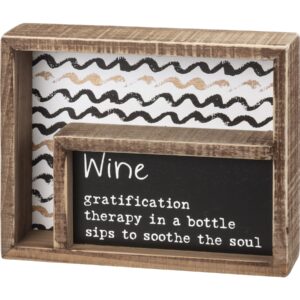 Wine is cheaper than Therapy! We put together these great wines, 3 whites and 3 reds that would put a smile on anyone's face, any day of the week. These wines can be enjoyed with or without food, but we always recommend a nibble. On the whites: Muralhas Vinho Verde - Monção e Melgaço has been producing wines and recognized for it since Roman occupation times, but was with Afonso III, 5th King of Portugal(1210-1279) that signed a ”Foral” that conceded Monção e Melgaço habitants the owners of the local wine and therefore they produced it with pride as they do today. The wine is made from the Alvarinho (predominant) and Trajadura varieties, indigenous to Portugal and the region, more specifically. The dry Muralhas de Moncao Vinho Verde never seems intrusive, but is soft, elegant and harmonious with no wood whatsoever. The wine goes well not only as an aperitif, but also with salads, seafood, fish dishes and white meat. Vitese Colomba Bianca Grillo Biologico- Grillo is the flagship of Sicily's indigenous white varieties, with its aromatic and floral nose. Fresh and harmonious on the well-structured palate, the Vitese Grillo has a long and elegant finish. Lovingly white, Lovingly good !! Bardos Rueda Verdejo- This artisan verdejo is part of the reason the Spanish Rueda region has become quite popular. Made unapologetically, you will find yourself like a true "Bard" drinking this wine. Delicious! On The Reds El Castro de Valtuille Joven - Made by the great Raul Perez. Fresh, mineral-tinged redcurrant and cherry scents that show very good clarity. Tangy, focused and pure on the palate, offering intense flavors of bitter cherry and red berry preserves. Shows a light touch that's quite pinot-like, along with a touch of smokiness that carries through a long, mineral-driven finish. If you want to show somebody what the Spanish region of Mencia smells, feels and tastes like, serve this one. Adega de Penalva Dão 'Indigena' Tinto -Adega de Penalva wines are delicious everyday examples of one of Portugal’s most intriguing appellations — the Dão. Perched above the Dão river itself as it snakes through its granite valleys, the Adega de Penalva is one of the leading cooperatives in the area, boasting around a thousand member growers. It’s important to note, though, that the average holding per member amounts to barely over a hectare—a figure that reminds us how tenaciously much of rural Portugal clings to its old ways. (On that note, all fruit destined for the ‘Indigena’ bottlings is hand-harvested.) Since its founding in the 1960s, the Adega has been collecting its members’ grapes and producing clean, characterful wines with a minimum of fuss. Aromas of leather and blueberries and notes of dark fruits with cherry and raspberry. Tank N32 Primitivo Appassimento IGT - Couldn't finish this wine case without bringing out the guns. This passionate and very well intended Italian red impresses with its perfect combination of elegance and strength. The bouquet reveals aromas of ripe cherries, juicy plums and dried fruit. In particular figs, dates and raisins come to mind. Has a dense and concentrated character. The pleasant and equally subtle residual sweetness gives this red wine a wonderful velvetiness. The long finish of Tank No 32 is carried by delicate notes of nougat and dark chocolate.
Wine is cheaper than Therapy! We put together these great wines, 3 whites and 3 reds that would put a smile on anyone's face, any day of the week. These wines can be enjoyed with or without food, but we always recommend a nibble. On the whites: Muralhas Vinho Verde - Monção e Melgaço has been producing wines and recognized for it since Roman occupation times, but was with Afonso III, 5th King of Portugal(1210-1279) that signed a ”Foral” that conceded Monção e Melgaço habitants the owners of the local wine and therefore they produced it with pride as they do today. The wine is made from the Alvarinho (predominant) and Trajadura varieties, indigenous to Portugal and the region, more specifically. The dry Muralhas de Moncao Vinho Verde never seems intrusive, but is soft, elegant and harmonious with no wood whatsoever. The wine goes well not only as an aperitif, but also with salads, seafood, fish dishes and white meat. Vitese Colomba Bianca Grillo Biologico- Grillo is the flagship of Sicily's indigenous white varieties, with its aromatic and floral nose. Fresh and harmonious on the well-structured palate, the Vitese Grillo has a long and elegant finish. Lovingly white, Lovingly good !! Bardos Rueda Verdejo- This artisan verdejo is part of the reason the Spanish Rueda region has become quite popular. Made unapologetically, you will find yourself like a true "Bard" drinking this wine. Delicious! On The Reds El Castro de Valtuille Joven - Made by the great Raul Perez. Fresh, mineral-tinged redcurrant and cherry scents that show very good clarity. Tangy, focused and pure on the palate, offering intense flavors of bitter cherry and red berry preserves. Shows a light touch that's quite pinot-like, along with a touch of smokiness that carries through a long, mineral-driven finish. If you want to show somebody what the Spanish region of Mencia smells, feels and tastes like, serve this one. Adega de Penalva Dão 'Indigena' Tinto -Adega de Penalva wines are delicious everyday examples of one of Portugal’s most intriguing appellations — the Dão. Perched above the Dão river itself as it snakes through its granite valleys, the Adega de Penalva is one of the leading cooperatives in the area, boasting around a thousand member growers. It’s important to note, though, that the average holding per member amounts to barely over a hectare—a figure that reminds us how tenaciously much of rural Portugal clings to its old ways. (On that note, all fruit destined for the ‘Indigena’ bottlings is hand-harvested.) Since its founding in the 1960s, the Adega has been collecting its members’ grapes and producing clean, characterful wines with a minimum of fuss. Aromas of leather and blueberries and notes of dark fruits with cherry and raspberry. Tank N32 Primitivo Appassimento IGT - Couldn't finish this wine case without bringing out the guns. This passionate and very well intended Italian red impresses with its perfect combination of elegance and strength. The bouquet reveals aromas of ripe cherries, juicy plums and dried fruit. In particular figs, dates and raisins come to mind. Has a dense and concentrated character. The pleasant and equally subtle residual sweetness gives this red wine a wonderful velvetiness. The long finish of Tank No 32 is carried by delicate notes of nougat and dark chocolate. -
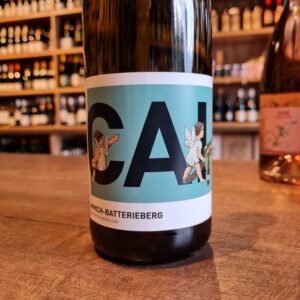 Immich-Batterieberg is one of the oldest wineries in the Mosel; originally founded by a Carolingian monastery, it can be traced back to the year 911. In 1495, the Immich family purchased the property, producing traditional dry and off-dry wines under their name for almost 500 years. The historical estate was then acquired in 2009 by Gernot Kollmann, one of Germany's finest up and comers. He is no stranger to the Mosel, having worked on many prestigious wineries in the region – Dr. Loosen, Weingut Van Volxem and Knebel. Since taking over, he has chosen to retain the long-standing tradition of the winery. The wines are once again produced in a dry or off-dry style, with sugar levels depending on each site, each vintage.80-percent of the vines are un-grafted and over 60 years old, and everything is worked organically. Intervention during vinification is also forbidden. A crisp, crunchy, keenly balanced, TOTALLY DRY trocken style Riesling.
Immich-Batterieberg is one of the oldest wineries in the Mosel; originally founded by a Carolingian monastery, it can be traced back to the year 911. In 1495, the Immich family purchased the property, producing traditional dry and off-dry wines under their name for almost 500 years. The historical estate was then acquired in 2009 by Gernot Kollmann, one of Germany's finest up and comers. He is no stranger to the Mosel, having worked on many prestigious wineries in the region – Dr. Loosen, Weingut Van Volxem and Knebel. Since taking over, he has chosen to retain the long-standing tradition of the winery. The wines are once again produced in a dry or off-dry style, with sugar levels depending on each site, each vintage.80-percent of the vines are un-grafted and over 60 years old, and everything is worked organically. Intervention during vinification is also forbidden. A crisp, crunchy, keenly balanced, TOTALLY DRY trocken style Riesling. -
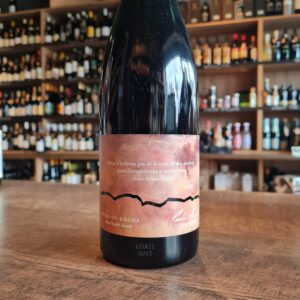 Vincent Rochette comes from a long line of grape growers rather than winemakers. In 1998, he bucked that trend by investing in a cellar and the necessary equipment to allow him to vinify his own grapes, which for five generations had been sold to other winemakers in the area. Vincent is an ardent believer in the benefits of biodynamics, fully converting his estate to follow that philosophy in 2006. He uses only natural products in the vineyard and carries out all his work in keeping with the cosmic cycles of the earth, not only among the vines but also in the cellar. One of his most interesting cuvées is the Côte du Rhone ‘Nature’, which has had no sulphites added at any stage of the winemaking process. Due to the fact that sulphites are naturally present in grapes, there are still 9mg present (below the legal 10mg limit which is required to state that the wine contains sulphites). The result is a wine that is simply a pure expression of Grenache and Syrah. Harvesting, racking and bottling are all carried out in accordance with cosmic rhythms. A delicious wine to consume today, with grills, summer salads, spicy dishes such as couscous, a tagine with candied fruits (apricots, lemons, onions, etc.)
Vincent Rochette comes from a long line of grape growers rather than winemakers. In 1998, he bucked that trend by investing in a cellar and the necessary equipment to allow him to vinify his own grapes, which for five generations had been sold to other winemakers in the area. Vincent is an ardent believer in the benefits of biodynamics, fully converting his estate to follow that philosophy in 2006. He uses only natural products in the vineyard and carries out all his work in keeping with the cosmic cycles of the earth, not only among the vines but also in the cellar. One of his most interesting cuvées is the Côte du Rhone ‘Nature’, which has had no sulphites added at any stage of the winemaking process. Due to the fact that sulphites are naturally present in grapes, there are still 9mg present (below the legal 10mg limit which is required to state that the wine contains sulphites). The result is a wine that is simply a pure expression of Grenache and Syrah. Harvesting, racking and bottling are all carried out in accordance with cosmic rhythms. A delicious wine to consume today, with grills, summer salads, spicy dishes such as couscous, a tagine with candied fruits (apricots, lemons, onions, etc.) -
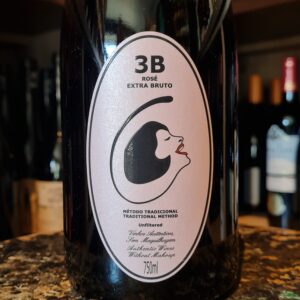 The Filipa Pato 3B Sparkling Rosé is a delicious treat of a wine from one of my favorite winemakers in Portugal. Filipa Pato is the daughter of arguably one of Portugal's most famous winemakers, Luis Pato. Passion for the traditional indigenous grape varietals of Bairrada led Filipa Pato to start her own project in 2001. She works a total of 12 hectares of vineyards scattered in various plots throughout the Bairrada appellation of Portugal. Utilizing biodynamic farming practices and minimal-intervention winemaking. The 3B is a homage to the traditional sparkling wines of Bairrada, with this being a blend of the indigenous Baga and Bical grapes. The Bical adds mineral and citrus notes to the berry red fruit notes of the Baga. This is a great little sparkler with a dry finish. Filipa and her husband, Belgian sommelier and restaurateur William Wouters, produce vinhos autênticos sem maquilagem – 'Authentic Wines Without Makeup.' 3B's-Bairrada, Baga & Bical
The Filipa Pato 3B Sparkling Rosé is a delicious treat of a wine from one of my favorite winemakers in Portugal. Filipa Pato is the daughter of arguably one of Portugal's most famous winemakers, Luis Pato. Passion for the traditional indigenous grape varietals of Bairrada led Filipa Pato to start her own project in 2001. She works a total of 12 hectares of vineyards scattered in various plots throughout the Bairrada appellation of Portugal. Utilizing biodynamic farming practices and minimal-intervention winemaking. The 3B is a homage to the traditional sparkling wines of Bairrada, with this being a blend of the indigenous Baga and Bical grapes. The Bical adds mineral and citrus notes to the berry red fruit notes of the Baga. This is a great little sparkler with a dry finish. Filipa and her husband, Belgian sommelier and restaurateur William Wouters, produce vinhos autênticos sem maquilagem – 'Authentic Wines Without Makeup.' 3B's-Bairrada, Baga & Bical -
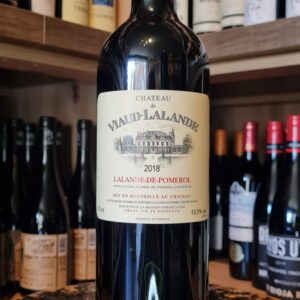 Chateau Viaud Lalande is a small-scale venture of the Durand – Teyssier family who have been making wine in the village of Puisseguin, appellation of Lalande de Pomerol, for three generations. 1.5 hectares of vineyards adjoining the Chateau were planted by Philippe Durand – Teyssier back in the 60’s. Typically for the region, those are mostly Merlot and Cabernet Franc well suited to the local, clay dominated soils. Since 2007 Philippe has handed over the wine making and day-to-day running of the property to his son Thomas. Having previously worked in prominent 1er and Grand Cru Classé estates in Saint Emilion (Château Belair, Château Cadet Bon), Thomas is continuing family tradition, with clear focus on quality. Annual production: 9000 bottles.
Chateau Viaud Lalande is a small-scale venture of the Durand – Teyssier family who have been making wine in the village of Puisseguin, appellation of Lalande de Pomerol, for three generations. 1.5 hectares of vineyards adjoining the Chateau were planted by Philippe Durand – Teyssier back in the 60’s. Typically for the region, those are mostly Merlot and Cabernet Franc well suited to the local, clay dominated soils. Since 2007 Philippe has handed over the wine making and day-to-day running of the property to his son Thomas. Having previously worked in prominent 1er and Grand Cru Classé estates in Saint Emilion (Château Belair, Château Cadet Bon), Thomas is continuing family tradition, with clear focus on quality. Annual production: 9000 bottles. -
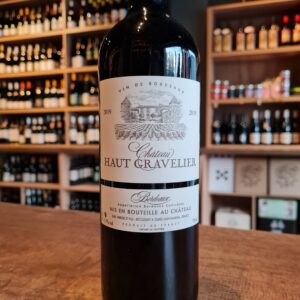 Located within the AOC Bordeaux, the Vignoble de Gravelierhas 32 Ha of vines with an average age of 20 years. It is located on hillsides thus benefiting from a beautiful sunshine. The harvest is harvested at perfect maturity and vinified using the traditional method in stainless steel vats and aged in cement vats. The grape variety of the vineyard is composed of 75% Merlot and 25% Cabernet-Sauvignon. To present a quality wine, the yields and phytosanitary treatments are moderate. The foliage is kept as high as possible to obtain better maturity. With deep colour, classic structure and unusually ripe flavours, this is classic claret to serve with roast beef, duck or T-bone steak. A gourmet Bordeaux!
Located within the AOC Bordeaux, the Vignoble de Gravelierhas 32 Ha of vines with an average age of 20 years. It is located on hillsides thus benefiting from a beautiful sunshine. The harvest is harvested at perfect maturity and vinified using the traditional method in stainless steel vats and aged in cement vats. The grape variety of the vineyard is composed of 75% Merlot and 25% Cabernet-Sauvignon. To present a quality wine, the yields and phytosanitary treatments are moderate. The foliage is kept as high as possible to obtain better maturity. With deep colour, classic structure and unusually ripe flavours, this is classic claret to serve with roast beef, duck or T-bone steak. A gourmet Bordeaux! -
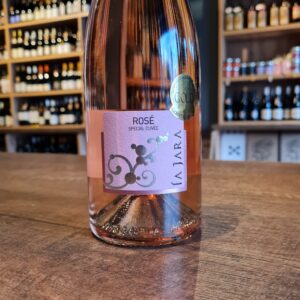 A totally irresistible semi-sparkling organic rosé from our favourite Prosecco producer La Jara, but in this case they use a little bit of the red grape Raboso, to give the wine its lovely pale coral colour. The nose is delicate and fruity, led by aromas of ripe strawberries and raspberries. The palate is fresh and tart, full of gooseberry and redcurrant notes. Try pairing this wine with risotto or pasta, or simply having it as an aperitif. Just for the fun of it, I leave you with a fun fact. The Italians call the string around the bottle a spago. It has no function other than that it looks nice. And that is exactly what makes it a real Italian wine. Beautiful on the inside and beautiful on the outside. A feast to watch and a feast to drink.
A totally irresistible semi-sparkling organic rosé from our favourite Prosecco producer La Jara, but in this case they use a little bit of the red grape Raboso, to give the wine its lovely pale coral colour. The nose is delicate and fruity, led by aromas of ripe strawberries and raspberries. The palate is fresh and tart, full of gooseberry and redcurrant notes. Try pairing this wine with risotto or pasta, or simply having it as an aperitif. Just for the fun of it, I leave you with a fun fact. The Italians call the string around the bottle a spago. It has no function other than that it looks nice. And that is exactly what makes it a real Italian wine. Beautiful on the inside and beautiful on the outside. A feast to watch and a feast to drink. -
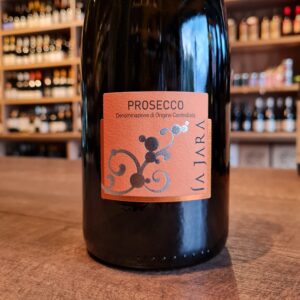 La Jara, based in the heart of Prosecco country just south of Conegliano, make a superb range of organic wines including some excellent Proseccos such as this. Being a frizzante it's got a soft sparkle and in some ways helps the fruit character stand out that bit more. With masses of fine bubbles and flavours of apple, peach, pear and ripe citrus fruits it's a very approachable style that's perhaps a bit too easy to drink. Certainly a step above a lot of other Proseccos. It's freshness makes it a great 'anytime' fizz. It's also really good alongside nibbles like olives, or tortilla chips and dips.
La Jara, based in the heart of Prosecco country just south of Conegliano, make a superb range of organic wines including some excellent Proseccos such as this. Being a frizzante it's got a soft sparkle and in some ways helps the fruit character stand out that bit more. With masses of fine bubbles and flavours of apple, peach, pear and ripe citrus fruits it's a very approachable style that's perhaps a bit too easy to drink. Certainly a step above a lot of other Proseccos. It's freshness makes it a great 'anytime' fizz. It's also really good alongside nibbles like olives, or tortilla chips and dips. -
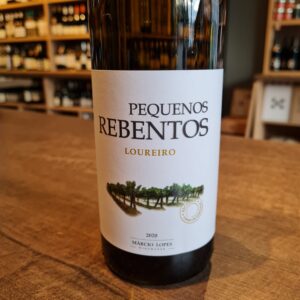 Márcio Lopes studied as an engineer, but cut his winemaking teeth working for two years with Vinho Verde master Anselmo Mendes in Melgaço. He then travelled to Australia where he made wine in Rutherglen and Tasmania, another cool climate region. He returned to Portugal in 2010 to start his own projects, including Pequenos Rebentos in Vinho Verde. He initially started working with Alvarinho and Trajadura (known as Albariño and Treixadura in Spain) from the sub-regions of Monção and Melgaço. These areas have a very particular microclimate, with slightly less Atlantic influence than the rest of the region - winters are cold with moderate rainfall and summers are hot and dry. During 2016 he also started to grow and vinify local varietals Loureiro. He now farms 5ha of vineyards, planted on granite, as well as buying some grapes from selected growers who also work in the same sustainable way and without herbicides. His winemaking is low intervention, he ferments using natural yeasts, and like many of our producers he believes that if the fruit is good enough he will make quality wines with balance that reflect his terroir. This seems to be working - his wines are distinctively fresh and vibrant, showing bright and clear typical variety aromas.
Márcio Lopes studied as an engineer, but cut his winemaking teeth working for two years with Vinho Verde master Anselmo Mendes in Melgaço. He then travelled to Australia where he made wine in Rutherglen and Tasmania, another cool climate region. He returned to Portugal in 2010 to start his own projects, including Pequenos Rebentos in Vinho Verde. He initially started working with Alvarinho and Trajadura (known as Albariño and Treixadura in Spain) from the sub-regions of Monção and Melgaço. These areas have a very particular microclimate, with slightly less Atlantic influence than the rest of the region - winters are cold with moderate rainfall and summers are hot and dry. During 2016 he also started to grow and vinify local varietals Loureiro. He now farms 5ha of vineyards, planted on granite, as well as buying some grapes from selected growers who also work in the same sustainable way and without herbicides. His winemaking is low intervention, he ferments using natural yeasts, and like many of our producers he believes that if the fruit is good enough he will make quality wines with balance that reflect his terroir. This seems to be working - his wines are distinctively fresh and vibrant, showing bright and clear typical variety aromas. -
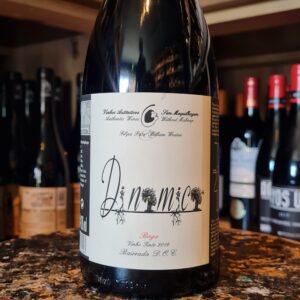 Filipa Pato is the confirmation of the old saying "son of fish knows how to swim". Although she followed the footsteps of her father Luís Pato, even in her academic training, Filipa always wanted to have her own world, her own project, where she would show her ideas, and go up with her own pulse. It was the 2001 harvest, a great year in Bairrada, which would provide all of this. That year, she decided to walk on her own feet, creating her dream. The success was immediate, and soon she rose to the status of one of the most brilliant winemakers in Portugal. The wines are the result of Filipa's innovative and brilliant spirit. They were quickly at the forefront of national and international criticism. In 2011, with her husband William Wouters, a prestigious Belgian Sommelier and owner of the Pazzo restaurant in Antwerp, Filipa receives the title "Newcomer of the year".
Filipa Pato is the confirmation of the old saying "son of fish knows how to swim". Although she followed the footsteps of her father Luís Pato, even in her academic training, Filipa always wanted to have her own world, her own project, where she would show her ideas, and go up with her own pulse. It was the 2001 harvest, a great year in Bairrada, which would provide all of this. That year, she decided to walk on her own feet, creating her dream. The success was immediate, and soon she rose to the status of one of the most brilliant winemakers in Portugal. The wines are the result of Filipa's innovative and brilliant spirit. They were quickly at the forefront of national and international criticism. In 2011, with her husband William Wouters, a prestigious Belgian Sommelier and owner of the Pazzo restaurant in Antwerp, Filipa receives the title "Newcomer of the year". -
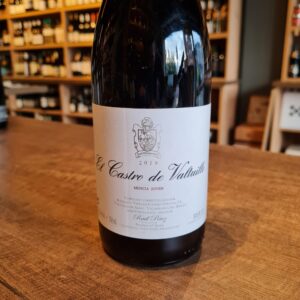 The Castro Ventosa estate was founded by the Perez family in 1752 and has been in the family ever since. They own 75 hectares of Mencía vines in Bierzo, making them the biggest owners of this varietal within the D.O Bierzo. For this wine, younger vines are used from 17 parcels across the Valtuille de Abajo village zone. Vines range from 20-40 years and viticulture is conventional, everything is done by hand and vines are not irrigated. Pair it with hard cheese, pasta, red meat, roasted vegetables.
The Castro Ventosa estate was founded by the Perez family in 1752 and has been in the family ever since. They own 75 hectares of Mencía vines in Bierzo, making them the biggest owners of this varietal within the D.O Bierzo. For this wine, younger vines are used from 17 parcels across the Valtuille de Abajo village zone. Vines range from 20-40 years and viticulture is conventional, everything is done by hand and vines are not irrigated. Pair it with hard cheese, pasta, red meat, roasted vegetables. -
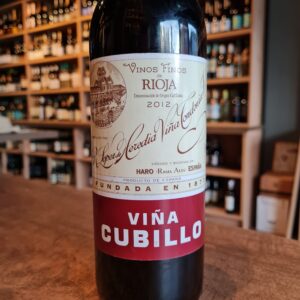 Viña Cubillo wines come from the vineyard called Viña Cubillas, some 4 km away from the bodega, which as with all of the other vineyards, was bought by our founder. Historically these wines were called "Special Harvest". For 143 years, four generations of the López de Heredia family have devoted themselves to producing exceptional and unique wines. Masterpieces which have achieved that which the founder of the company, Rafael López de Heredia y Landeta, defined in the late nineteenth century as the "Supreme Rioja". Vineyard care, a scrupulous selection of grapes, ageing in oak barrels in the heart of deep underground galleries, and the later ageing in bottles, all contribute to making these illustrious wines with their exceptional bouquet. Decant it for an hour if possible, It goes perfectly with all meat dishes, tapas and assorted antipasti, sausages, small game and wild mushrooms.
Viña Cubillo wines come from the vineyard called Viña Cubillas, some 4 km away from the bodega, which as with all of the other vineyards, was bought by our founder. Historically these wines were called "Special Harvest". For 143 years, four generations of the López de Heredia family have devoted themselves to producing exceptional and unique wines. Masterpieces which have achieved that which the founder of the company, Rafael López de Heredia y Landeta, defined in the late nineteenth century as the "Supreme Rioja". Vineyard care, a scrupulous selection of grapes, ageing in oak barrels in the heart of deep underground galleries, and the later ageing in bottles, all contribute to making these illustrious wines with their exceptional bouquet. Decant it for an hour if possible, It goes perfectly with all meat dishes, tapas and assorted antipasti, sausages, small game and wild mushrooms. -
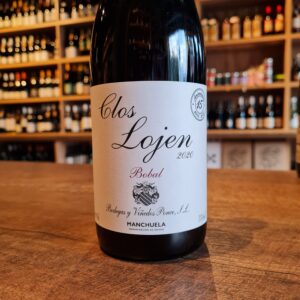 Manchuela is the spiritual home of the Bobal grape. Clos Lojen made by Bodega y Viñedos Ponce is a biodynamic and pure 100% Bobal from limestone soils, fermented in big oak casks. Bobal is the 2nd most planted red variety in Spain yet so little of it reaches the heights of which it’s undoubtedly capable. With a naturally deep colour, high levels of tannins, high acidity and an ability to be exciting as either a blending partner or a mono-varietal wine, momentum needs to be gained with Bobal, till then we seek winemakers that do exciting things and produce wines that are fun to drink. As per Juan Antonio Ponce own words “I want my wines to be bought by any ordinary person. We must be able to reach consumers in a straight-forward manner otherwise beer will cannibalize our markets.”
Manchuela is the spiritual home of the Bobal grape. Clos Lojen made by Bodega y Viñedos Ponce is a biodynamic and pure 100% Bobal from limestone soils, fermented in big oak casks. Bobal is the 2nd most planted red variety in Spain yet so little of it reaches the heights of which it’s undoubtedly capable. With a naturally deep colour, high levels of tannins, high acidity and an ability to be exciting as either a blending partner or a mono-varietal wine, momentum needs to be gained with Bobal, till then we seek winemakers that do exciting things and produce wines that are fun to drink. As per Juan Antonio Ponce own words “I want my wines to be bought by any ordinary person. We must be able to reach consumers in a straight-forward manner otherwise beer will cannibalize our markets.” -
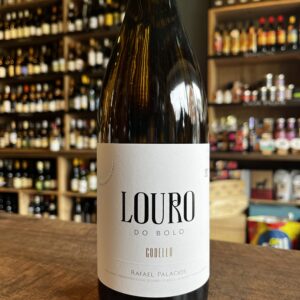 The best white wines of Spain are made of Godello from the region Valdeorras in Galicia. More and more this wine is can be seen in many wine lists across Ireland as its increasing popularity is par to the Albarino from Rias baixas or the Rueda's Verdejo. Rafael Palacios the maker of this wine comes from something of a winemaking dynasty. His father, uncle and brother are all highly regarded winemakers across Rioja, Priorat and other parts of the country. Rafael himself cut his teeth working on his father's Rioja estate, prior to training and working in Bordeaux and Coonawarra, South Australia. Rafa started this project in 2004 in the then little known region of Valdeorras, home of a few ancient plots of Godello vines. This grape variety was virtually extinct in Spain but Rafa and a few others realised its potential and extensive replanting of the variety began. The Louro is crafted from younger vines but is selected from plots that produce more age-worthy wines. Fermented with indigenous yeast and aged in used foudre, Louro showcases Rafa’s talent at balancing the minerality of the grape with the richness and texture of the élevage. Pair it with baked whitefish, bluefish, fish and vegetables, grilled fish, grilled whitefish, pasta with fish, poultry, rice with fish, roasted fish, roasted foods.
The best white wines of Spain are made of Godello from the region Valdeorras in Galicia. More and more this wine is can be seen in many wine lists across Ireland as its increasing popularity is par to the Albarino from Rias baixas or the Rueda's Verdejo. Rafael Palacios the maker of this wine comes from something of a winemaking dynasty. His father, uncle and brother are all highly regarded winemakers across Rioja, Priorat and other parts of the country. Rafael himself cut his teeth working on his father's Rioja estate, prior to training and working in Bordeaux and Coonawarra, South Australia. Rafa started this project in 2004 in the then little known region of Valdeorras, home of a few ancient plots of Godello vines. This grape variety was virtually extinct in Spain but Rafa and a few others realised its potential and extensive replanting of the variety began. The Louro is crafted from younger vines but is selected from plots that produce more age-worthy wines. Fermented with indigenous yeast and aged in used foudre, Louro showcases Rafa’s talent at balancing the minerality of the grape with the richness and texture of the élevage. Pair it with baked whitefish, bluefish, fish and vegetables, grilled fish, grilled whitefish, pasta with fish, poultry, rice with fish, roasted fish, roasted foods. -
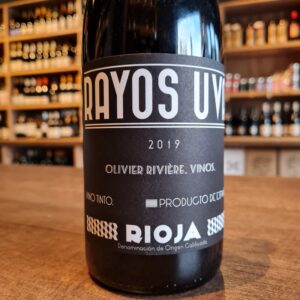 Olivier Riviere, founder and winemaker at Rayos Uva Rioja, is originally from Cognac. He studied in St-Emilion and then made wine in southern France and Burgundy before moving to Ribera del Duero in 2004, when he started leasing land and purchasing fruit for his new Spanish blends. Finally, in 2013, Olivier bought his first 3.5 acres in Rioja Alavesa; Rayos Uva is now in its sixth vintage. Olivier's holdings are substantially larger now, but he still sources fruit from his favorite bodegas. Grown by Bodegas Lacus where Olivier is also the winemaker, this 2021 is a blend of hand-harvested Tempranillo and Graciano that is semi-carbonically fermented in tanks with wild yeasts. Aged 10-12 months in tank and concrete foudre. An exciting Rioja with a French artisanal sensibility. Slightly filtered. It is recommended to open the bottle half an hour before consuming it to express the true potential.
Olivier Riviere, founder and winemaker at Rayos Uva Rioja, is originally from Cognac. He studied in St-Emilion and then made wine in southern France and Burgundy before moving to Ribera del Duero in 2004, when he started leasing land and purchasing fruit for his new Spanish blends. Finally, in 2013, Olivier bought his first 3.5 acres in Rioja Alavesa; Rayos Uva is now in its sixth vintage. Olivier's holdings are substantially larger now, but he still sources fruit from his favorite bodegas. Grown by Bodegas Lacus where Olivier is also the winemaker, this 2021 is a blend of hand-harvested Tempranillo and Graciano that is semi-carbonically fermented in tanks with wild yeasts. Aged 10-12 months in tank and concrete foudre. An exciting Rioja with a French artisanal sensibility. Slightly filtered. It is recommended to open the bottle half an hour before consuming it to express the true potential. -
Out of stock
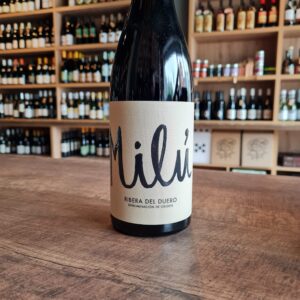 A rich and satisfying Ribera del Duero red, from a quality focussed micro producer Quinta Milú. This is a family run project in the Ribera del Duero from the Asturian viticulturist Germán R. Blanco. A small project which for nearly 10 years now has looked for wines which tell us about where they were born, a small village by the name of La Aguilera situated in the province of Burgos. Germán makes his elegant, fruit-forward wines using foot-treading, wild yeast fermentation and minimal handling. Not filtered, not clarified and not stabilized is his ethos. All his wines share a delicious rusticity, purity of fruit, and incredible freshness. Germán calls this— his flagship wine— a “vino de pueblo”, which translates as “a wine for every day and for everyone.” Pair it with braised meats, steak, game, lamb, root veggies, hard cheese or just have it on its own.
A rich and satisfying Ribera del Duero red, from a quality focussed micro producer Quinta Milú. This is a family run project in the Ribera del Duero from the Asturian viticulturist Germán R. Blanco. A small project which for nearly 10 years now has looked for wines which tell us about where they were born, a small village by the name of La Aguilera situated in the province of Burgos. Germán makes his elegant, fruit-forward wines using foot-treading, wild yeast fermentation and minimal handling. Not filtered, not clarified and not stabilized is his ethos. All his wines share a delicious rusticity, purity of fruit, and incredible freshness. Germán calls this— his flagship wine— a “vino de pueblo”, which translates as “a wine for every day and for everyone.” Pair it with braised meats, steak, game, lamb, root veggies, hard cheese or just have it on its own. -
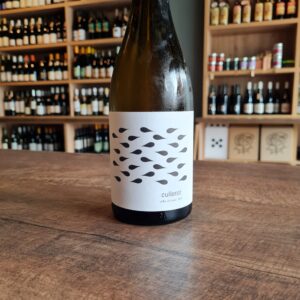 Celler del Roure is making very interesting wines with local grape varieties in the Valencia area. Many of these old, indigenous varieties are largely forgotten and Cullerot highlights three of them (Verdil, Tortosina, and Merseguera) together with Pedro Ximénez, Macabeo, Malvasía, and others. In addition to their focus on indigenous grape varieties, Celler del Roure is employing traditional vinifications methods: hand harvesting, fermenting with native yeasts in stone lagars, and aging in very old clay amphorae. Cullerot has a bit of skin contact, and is medium bodied with notes of stone fruit, tropical notes, apple skin, and clay-y minerality. A great, truly interesting, "almost-orange" skin contact white wine, for less than €20.
Celler del Roure is making very interesting wines with local grape varieties in the Valencia area. Many of these old, indigenous varieties are largely forgotten and Cullerot highlights three of them (Verdil, Tortosina, and Merseguera) together with Pedro Ximénez, Macabeo, Malvasía, and others. In addition to their focus on indigenous grape varieties, Celler del Roure is employing traditional vinifications methods: hand harvesting, fermenting with native yeasts in stone lagars, and aging in very old clay amphorae. Cullerot has a bit of skin contact, and is medium bodied with notes of stone fruit, tropical notes, apple skin, and clay-y minerality. A great, truly interesting, "almost-orange" skin contact white wine, for less than €20. -
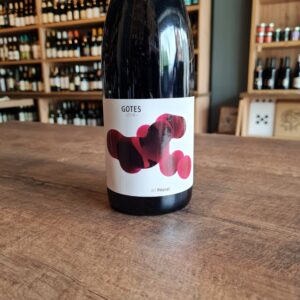 Gotes was the last to be incorporated into the Portal del Priorat's wine family, the Alfredo Arribas project in this denomination, and was envisioned to highlight the freshness of Priorat wines; gotes (drops) of freshness, like dewdrops. Don't expect to find in Gotes the more usual Priorat typicity, with profound maturity and intense minerality. Gotes reflects another type of Priorat wine, refined, in the French style (we mean 'French' as in Burgundy), with a fresh and floral profile. The typicity of Gotes is rooted in the countryside, in its notes of aromatic plants, and in that delightful warmth, because although fresh it is Mediterranean. Another special feature of Gotes is the polish and attention to detail it emits; it's an elegant wine; it has clearly been crafted by experts. If Gotes is refined on the nose, it's positively explosive on the palate! It grows and grows, with lots of volume and a very seductive sweetness and velvety texture. Gotes is fruit, but a very varied fruit cocktail: red fruits, black fruits, both fresh and jammy, the odd juicy stone fruit like mango (the Garnacha always leaves its mark) and fresh grapes that provide a citrusy touch. Ideal with dishes of a upper middle power taste. Will be excellent with a salad of figs and duck ham with Parmesan shavings. It will also be great taking with red meats, duck breast grilled or thigh kid with cider and soft alioli.
Gotes was the last to be incorporated into the Portal del Priorat's wine family, the Alfredo Arribas project in this denomination, and was envisioned to highlight the freshness of Priorat wines; gotes (drops) of freshness, like dewdrops. Don't expect to find in Gotes the more usual Priorat typicity, with profound maturity and intense minerality. Gotes reflects another type of Priorat wine, refined, in the French style (we mean 'French' as in Burgundy), with a fresh and floral profile. The typicity of Gotes is rooted in the countryside, in its notes of aromatic plants, and in that delightful warmth, because although fresh it is Mediterranean. Another special feature of Gotes is the polish and attention to detail it emits; it's an elegant wine; it has clearly been crafted by experts. If Gotes is refined on the nose, it's positively explosive on the palate! It grows and grows, with lots of volume and a very seductive sweetness and velvety texture. Gotes is fruit, but a very varied fruit cocktail: red fruits, black fruits, both fresh and jammy, the odd juicy stone fruit like mango (the Garnacha always leaves its mark) and fresh grapes that provide a citrusy touch. Ideal with dishes of a upper middle power taste. Will be excellent with a salad of figs and duck ham with Parmesan shavings. It will also be great taking with red meats, duck breast grilled or thigh kid with cider and soft alioli. -
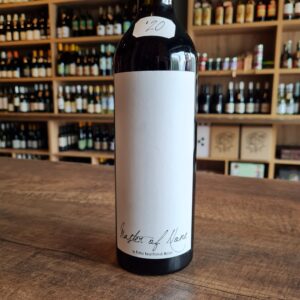 Master of none - Playing with words referring to themselves not being an expert in any one varietal or wine style hence the saying: “Jack of all trades, master of none”. Clever and humble, nonetheless, their wines are at the forefront not only of South Africa but in the world with the amazing wines they are producing. If you enjoy reds on the lighter end of the spectrum such as Pinot Noir or Gamay then Pieter's 'Master of None' will definitely be up your street! It comprises a blend of 5 different grape varieties from tiny vineyard plots across 6 distinct regions; 40% Grenache from Wellington, 30% Cinsault from sites in Darling and Stellenbosch, 8% Pinot Noir from Elgin and a further 8% Syrah from Swartland. Unusually, Pieter then tops up the blend with Voor Paardeberg Chenin Blanc, adding aromatic freshness to the finished wine. It drinks like a top-class Beaujolais – super bright and juicy, bursting with wild strawberry, cherry and with an earthy, smoky undercurrent. Enjoy at room temperature or slightly chilled – perfect for summer drinking! “In 2004, a lady came to my house to buy wine. She asked for anything but Shiraz. “I don’t drink Shiraz”, were her exact words. I poured her a glass of wine. She loved it and bought 3 cases. It was a straight Shiraz. It’s a fact – we do judge the book by its cover.”
Master of none - Playing with words referring to themselves not being an expert in any one varietal or wine style hence the saying: “Jack of all trades, master of none”. Clever and humble, nonetheless, their wines are at the forefront not only of South Africa but in the world with the amazing wines they are producing. If you enjoy reds on the lighter end of the spectrum such as Pinot Noir or Gamay then Pieter's 'Master of None' will definitely be up your street! It comprises a blend of 5 different grape varieties from tiny vineyard plots across 6 distinct regions; 40% Grenache from Wellington, 30% Cinsault from sites in Darling and Stellenbosch, 8% Pinot Noir from Elgin and a further 8% Syrah from Swartland. Unusually, Pieter then tops up the blend with Voor Paardeberg Chenin Blanc, adding aromatic freshness to the finished wine. It drinks like a top-class Beaujolais – super bright and juicy, bursting with wild strawberry, cherry and with an earthy, smoky undercurrent. Enjoy at room temperature or slightly chilled – perfect for summer drinking! “In 2004, a lady came to my house to buy wine. She asked for anything but Shiraz. “I don’t drink Shiraz”, were her exact words. I poured her a glass of wine. She loved it and bought 3 cases. It was a straight Shiraz. It’s a fact – we do judge the book by its cover.” -
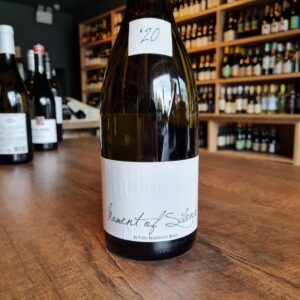 Moment of Silence is a South African wine made by superstar wine maker Pieter Walser. He buys in the fruit to make this blended wine of Viognier, Chenin Blanc and Chardonnay. It has been aged in old oak and it is a rich, powerful wine. Some of the fruit comes from vineyards which are over 50 years old.Stunning, all rounder, there is nothing you can fault in this wine. Aromas of candied lemon, cooked apple and mango with a core of minerality. Soft and voluptuous, it has a lovely ripeness and a fleshy, creamy mouthfeel, which leads to a perfect tangy freshness giving some zip to its otherwise mellow feel.
Moment of Silence is a South African wine made by superstar wine maker Pieter Walser. He buys in the fruit to make this blended wine of Viognier, Chenin Blanc and Chardonnay. It has been aged in old oak and it is a rich, powerful wine. Some of the fruit comes from vineyards which are over 50 years old.Stunning, all rounder, there is nothing you can fault in this wine. Aromas of candied lemon, cooked apple and mango with a core of minerality. Soft and voluptuous, it has a lovely ripeness and a fleshy, creamy mouthfeel, which leads to a perfect tangy freshness giving some zip to its otherwise mellow feel. -
Out of stock
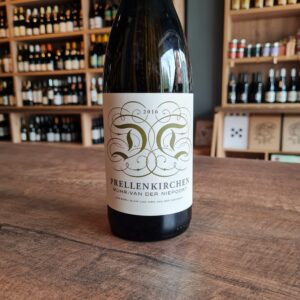 The exciting Muhr-Van der Niepoort project began in 2002 as a collaboration between Austrian PR guru Dorli Muhr and celebrated Portuguese winemaker Dirk Niepoort. Although the name is taken from the village of Prellenkirschen, all of the grapes for the white are sourced from the Spitzerberg, or a continuation of it. A blend of 90% Gruner Veltliner (35 year old vines) and 10% Riesling (planted in 1950), the grapes see some skin contact in the fermentation, imbuing the final wine with tension and extract, a mouth-watering savoury salinity and clearly-delineated spicy flavours of white pepper, fennel and cumin. Deep and a touch wild on the palate but with enormous personality and interest, its deep savoury style will appeal to lovers of edgy yet serious food-friendly whites.
The exciting Muhr-Van der Niepoort project began in 2002 as a collaboration between Austrian PR guru Dorli Muhr and celebrated Portuguese winemaker Dirk Niepoort. Although the name is taken from the village of Prellenkirschen, all of the grapes for the white are sourced from the Spitzerberg, or a continuation of it. A blend of 90% Gruner Veltliner (35 year old vines) and 10% Riesling (planted in 1950), the grapes see some skin contact in the fermentation, imbuing the final wine with tension and extract, a mouth-watering savoury salinity and clearly-delineated spicy flavours of white pepper, fennel and cumin. Deep and a touch wild on the palate but with enormous personality and interest, its deep savoury style will appeal to lovers of edgy yet serious food-friendly whites. -
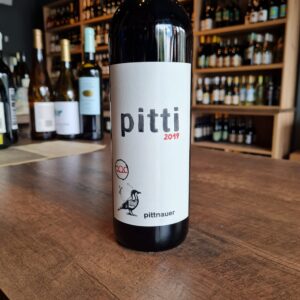 High on the hills of Austria there is more than just a lonely goat herd - there is also a fantastic winery, considered one of the country's best. Pittnauer has a long winemaking tradition in the region, and in 2006 moved to more biodynamic practices. The results are delicious, environmentally friendly wines with years of experience behind them. Now prepare yourself for some varieties you've probably never heard of - Pittnauer's Pitti Red Blend is made from blaufränkisch and Zweigelt grapes with a small quantity of Merlot added to the mixture. These varieties shine brightest in the Austrian climate, where they come together to make a stunningly delicious, full bodied wine reminiscent of spicy Shiraz. The ‘Pitti’ is a blend coming from vines that average 12-15 years in age and are planted on sandy clay mixed with limestone. Dark ruby in colour, the wine has tight tannins with black berries, cherries, cranberries and fresh acidic structure. Whispers of tobacco and liquorice. Ticks all the boxes of quality, drinkability and affordability and yumability.
High on the hills of Austria there is more than just a lonely goat herd - there is also a fantastic winery, considered one of the country's best. Pittnauer has a long winemaking tradition in the region, and in 2006 moved to more biodynamic practices. The results are delicious, environmentally friendly wines with years of experience behind them. Now prepare yourself for some varieties you've probably never heard of - Pittnauer's Pitti Red Blend is made from blaufränkisch and Zweigelt grapes with a small quantity of Merlot added to the mixture. These varieties shine brightest in the Austrian climate, where they come together to make a stunningly delicious, full bodied wine reminiscent of spicy Shiraz. The ‘Pitti’ is a blend coming from vines that average 12-15 years in age and are planted on sandy clay mixed with limestone. Dark ruby in colour, the wine has tight tannins with black berries, cherries, cranberries and fresh acidic structure. Whispers of tobacco and liquorice. Ticks all the boxes of quality, drinkability and affordability and yumability. -
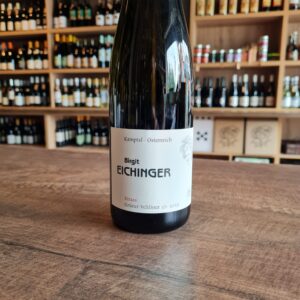 Weingut Birgit Eichinger was founded in 1992 by Birgit Eichinger and her husband Christian, who started out with roughly nine acres of vineyards shed from her parents' business, over time the vineyard area was expanded to 23 acres in the best traditional sites of Strass. This is a single-vineyard Grüner, from a vineyard whose loess (loose and sandy) soils and southward face are perfect for the cultivation of traditional Kamptal-style Grüner. The Birgit Eichinger Grüner Veltliner Strass Kamptal impresses with its elegantly dry taste. It was put on the bottle with only 1.8 grams of residual sugar. As one can of course expect with a wine, this Austrian naturally enchants with the finest balance in all dryness. Taste doesn't necessarily need sugar. On the palate, the texture of this light-footed white wine is wonderfully light. Due to the balanced fruit acidity, the Grüner Veltliner Rhinestone Kamptal flatters with velvety mouthfeel, without missing out on juicy liveliness. The finish comes with mineral notes of the soils dominated by loess soil and sandstone.
Weingut Birgit Eichinger was founded in 1992 by Birgit Eichinger and her husband Christian, who started out with roughly nine acres of vineyards shed from her parents' business, over time the vineyard area was expanded to 23 acres in the best traditional sites of Strass. This is a single-vineyard Grüner, from a vineyard whose loess (loose and sandy) soils and southward face are perfect for the cultivation of traditional Kamptal-style Grüner. The Birgit Eichinger Grüner Veltliner Strass Kamptal impresses with its elegantly dry taste. It was put on the bottle with only 1.8 grams of residual sugar. As one can of course expect with a wine, this Austrian naturally enchants with the finest balance in all dryness. Taste doesn't necessarily need sugar. On the palate, the texture of this light-footed white wine is wonderfully light. Due to the balanced fruit acidity, the Grüner Veltliner Rhinestone Kamptal flatters with velvety mouthfeel, without missing out on juicy liveliness. The finish comes with mineral notes of the soils dominated by loess soil and sandstone.


